Compare Marketo vs Salesforce Marketing Cloud to find the best marketing automation platform for your business. Discover differences in email marketing, omnichannel automation, CRM integration, personalization, and pricing. Learn which tool fits your needs in our in-depth comparison!
Marketo vs Salesforce Marketing Cloud vs Maestra: Choosing Your Ideal Omnichannel Marketing Platform
Marketo excels at B2B lead nurturing with robust email campaigns, Salesforce Marketing Cloud offers expansive multi-channel reach for enterprise B2C needs, and Maestra provides a unified omnichannel solution that combines the strengths of both with real-time personalization across all touchpoints.
After thorough research and testing, we found each platform caters to different business needs:
Marketo Engage—Best for B2B or mid-market companies focused on lead management and email marketing automation. Marketo shines in lead nurturing and scoring, but it’s primarily an email-centric platform with limited out-of-the-box channels. It lacks a built-in customer data platform (CDP) and some advanced personalization features, which means you may need additional tools as you scale.
Salesforce Marketing Cloud—Best for large B2C brands or omnichannel marketers who need a broad suite of marketing tools integrated with their CRM. SFMC includes email, SMS, push, ads, and more in an intuitive Journey Builder interface. It offers powerful personalization and analytics capabilities (especially if you use the Salesforce ecosystem), but it comes with a steep learning curve and costs. Many advanced features are add-ons, and true 360° customer views require integrating Salesforce’s separate CDP.
Maestra—Best for growing and large e-commerce businesses with a dedicated marketing team that want a unified omnichannel platform to drive hyper-personalized promotions across all channels. Maestra is an all-in-one solution that personalizes customer experiences across email, SMS, website, mobile app, offline stores, and paid ads from one place. It includes a real-time CDP with AI-driven segmentation, in-session website personalization, product recommendations, loyalty and referral programs, mobile push notifications, and more. With white-glove support (every client gets a dedicated success manager), Maestra helps companies execute complex cross-channel campaigns without the need for a large martech stack.
If that sounds like what you’re looking for, book a demo with our team today and see how Maestra can elevate your marketing to the next level!
In this in-depth comparison, we’ll evaluate Marketo vs Salesforce Marketing Cloud vs Maestra on 15 key categories.
Content:
Comparison Summary: Marketo vs Salesforce Marketing Cloud vs Maestra
Feature
Marketo Engage
Salesforce Marketing Cloud
Maestra
Omnichannel Flows Ability to build automated customer journeys across channels
⭐⭐⭐
Designed primarily for email campaigns. Marketo’s “Engagement Programs” can drip emails and trigger simple cross-channel actions, but there’s no visual journey builder. Other channels like SMS or push require add-ons or integrations.
Designed primarily for email campaigns. Marketo’s “Engagement Programs” can drip emails and trigger simple cross-channel actions, but there’s no visual journey builder. Other channels like SMS or push require add-ons or integrations.
⭐⭐⭐⭐
Built for multi-channel outreach. SFMC’s Journey Builder provides an intuitive drag-and-drop interface to orchestrate emails, SMS, push, ads, etc., in one view. Lacks a native CDP (you might need additional Salesforce data products).
Built for multi-channel outreach. SFMC’s Journey Builder provides an intuitive drag-and-drop interface to orchestrate emails, SMS, push, ads, etc., in one view. Lacks a native CDP (you might need additional Salesforce data products).
🏆
⭐⭐⭐⭐⭐
Designed for seamless omnichannel marketing. Maestra enables hyper-personalized flows that connect email, SMS, website, app, offline, and paid media touchpoints. Its built-in real-time CDP + cross-channel journeys builder allows building complex flows without performance issues (some Maestra users run +90 active flows smoothly).
⭐⭐⭐⭐⭐
Designed for seamless omnichannel marketing. Maestra enables hyper-personalized flows that connect email, SMS, website, app, offline, and paid media touchpoints. Its built-in real-time CDP + cross-channel journeys builder allows building complex flows without performance issues (some Maestra users run +90 active flows smoothly).
Customer Data Management & Segmentation Unified customer profiles and audience segmentation capabilities
⭐⭐⭐
Stores leads in a central database with standard attributes. Marketo offers lead scoring and smart lists to segment contacts by behavior or demographics. However, all data is kept in one flat lead table, limiting flexibility for advanced segmentation.
Stores leads in a central database with standard attributes. Marketo offers lead scoring and smart lists to segment contacts by behavior or demographics. However, all data is kept in one flat lead table, limiting flexibility for advanced segmentation.
⭐⭐⭐⭐
Extensive data model with Data Extensions and integrations. SFMC can aggregate data from multiple sources and create sophisticated segments (e.g. by purchase history or engagement), especially if combined with Salesforce’s CRM and Data Cloud. But it requires strong data management skills and SQL knowledge to fully leverage.
Extensive data model with Data Extensions and integrations. SFMC can aggregate data from multiple sources and create sophisticated segments (e.g. by purchase history or engagement), especially if combined with Salesforce’s CRM and Data Cloud. But it requires strong data management skills and SQL knowledge to fully leverage.
🏆
⭐⭐⭐⭐⭐
Built-in real-time CDP unifies customer data from all channels into a single profile. Maestra supports AI-powered segments that update instantly based on behavior. Marketers can define extremely granular segments—e.g. by product interactions, RFM (recency / frequency / monetary value) scores, or even nested conditions—without coding.
⭐⭐⭐⭐⭐
Built-in real-time CDP unifies customer data from all channels into a single profile. Maestra supports AI-powered segments that update instantly based on behavior. Marketers can define extremely granular segments—e.g. by product interactions, RFM (recency / frequency / monetary value) scores, or even nested conditions—without coding.
Site Personalization Personalizing website content for each visitor
⭐⭐⭐
Offers dynamic content on websites and landing pages based on known lead data. Marketo’s Web Personalization can swap out banners or messages for recognized leads but lacks sophisticated AI-driven personalization.
Offers dynamic content on websites and landing pages based on known lead data. Marketo’s Web Personalization can swap out banners or messages for recognized leads but lacks sophisticated AI-driven personalization.
⭐⭐⭐⭐
Marketing Cloud Personalization (Interaction Studio) can tailor web experiences in real time using Einstein AI, but it’s a separate module and typically available in higher tiers.
Marketing Cloud Personalization (Interaction Studio) can tailor web experiences in real time using Einstein AI, but it’s a separate module and typically available in higher tiers.
🏆
⭐⭐⭐⭐⭐
Provides in-session website personalization out of the box. Tracks real-time visitor behavior and adjusts on-page content instantly—no extra add-ons required.
⭐⭐⭐⭐⭐
Provides in-session website personalization out of the box. Tracks real-time visitor behavior and adjusts on-page content instantly—no extra add-ons required.
Email Email marketing capabilities and personalization
⭐⭐⭐⭐
A core strength of Marketo. It excels at automated nurture emails and lead scoring. Dynamic tokens allow personalization, though advanced AI-based personalization is limited.
A core strength of Marketo. It excels at automated nurture emails and lead scoring. Dynamic tokens allow personalization, though advanced AI-based personalization is limited.
🏆
⭐⭐⭐⭐⭐
Enterprise-level email capabilities. Email Studio handles huge volumes, Einstein offers advanced personalization and send-time optimization. Requires more technical know-how.
⭐⭐⭐⭐⭐
Enterprise-level email capabilities. Email Studio handles huge volumes, Einstein offers advanced personalization and send-time optimization. Requires more technical know-how.
🏆
⭐⭐⭐⭐⭐
Comes with a proprietary email composer supporting deep personalization from the built-in CDP. Supports dynamic blocks, AI-driven content, and advanced testing (A/B, holdout). Also includes AMP for Email interactivity.
⭐⭐⭐⭐⭐
Comes with a proprietary email composer supporting deep personalization from the built-in CDP. Supports dynamic blocks, AI-driven content, and advanced testing (A/B, holdout). Also includes AMP for Email interactivity.
SMS Text message marketing and SMS automation
⭐⭐⭐
Possible but typically requires add-ons/integrations like Twilio or Adobe Journey Optimizer. Not as straightforward as Marketo’s email features.
Possible but typically requires add-ons/integrations like Twilio or Adobe Journey Optimizer. Not as straightforward as Marketo’s email features.
⭐⭐⭐⭐
Dedicated Mobile Studio handles SMS. You can set up two-way campaigns, automation, personalization, and compliance. Integrated with Journeys.
Dedicated Mobile Studio handles SMS. You can set up two-way campaigns, automation, personalization, and compliance. Integrated with Journeys.
🏆
⭐⭐⭐⭐⭐
SMS is a core channel in Maestra. You can seamlessly incorporate texts into campaigns, with real-time segmentation, link tracking, and behavior triggers. Low per-SMS cost.
⭐⭐⭐⭐⭐
SMS is a core channel in Maestra. You can seamlessly incorporate texts into campaigns, with real-time segmentation, link tracking, and behavior triggers. Low per-SMS cost.
Website and Email Product Recommendations AI-driven product or content recommendations personalized to each customer
⭐
No built-in recommendation engine. You’d rely on third-party solutions or manual dynamic content. Marketo alone can’t automatically suggest products.
No built-in recommendation engine. You’d rely on third-party solutions or manual dynamic content. Marketo alone can’t automatically suggest products.
⭐⭐⭐⭐
Einstein Recommendations can serve personalized product/content suggestions in emails and on-site, but requires additional setup. Powerful for large catalogs.
Einstein Recommendations can serve personalized product/content suggestions in emails and on-site, but requires additional setup. Powerful for large catalogs.
🏆
⭐⭐⭐⭐⭐
Built-in AI recommendation engine for on-site and email. Offers 14 algorithms (best-selling, “you might also like, ” etc.) and real-time updates to reflect user behavior.
⭐⭐⭐⭐⭐
Built-in AI recommendation engine for on-site and email. Offers 14 algorithms (best-selling, “you might also like, ” etc.) and real-time updates to reflect user behavior.
Promotions and Referrals Referral programs and promo campaign tools
⭐
Purely a marketing automation tool, no native referral or promo tracking. You can distribute coupon codes, but must track usage externally.
Purely a marketing automation tool, no native referral or promo tracking. You can distribute coupon codes, but must track usage externally.
⭐
Again, no built-in referral or loyalty module in SFMC. It can communicate promos, but you need a separate system to manage referral logic.
Again, no built-in referral or loyalty module in SFMC. It can communicate promos, but you need a separate system to manage referral logic.
🏆
⭐⭐⭐⭐⭐
Comes with referral tools for unique referral codes, tracking, and reward issuance. Also supports time-bound promos that auto-sync across channels—emails, SMS, onsite banners.
⭐⭐⭐⭐⭐
Comes with referral tools for unique referral codes, tracking, and reward issuance. Also supports time-bound promos that auto-sync across channels—emails, SMS, onsite banners.
Loyalty Programs Points, rewards, and VIP tiers
⭐
Lacks loyalty management. Requires separate loyalty platform and manual data sync.
Lacks loyalty management. Requires separate loyalty platform and manual data sync.
⭐
No native loyalty features in SFMC. Salesforce has a separate Loyalty Management product that can integrate.
No native loyalty features in SFMC. Salesforce has a separate Loyalty Management product that can integrate.
🏆
⭐⭐⭐⭐⭐
Includes a fully integrated loyalty module for points, tiers, and rewards. Real-time updates to point balances. Marketers can instantly trigger loyalty-based campaigns.
⭐⭐⭐⭐⭐
Includes a fully integrated loyalty module for points, tiers, and rewards. Real-time updates to point balances. Marketers can instantly trigger loyalty-based campaigns.
Mobile and Web Push Notifications Push notifications for mobile apps and desktop browsers
⭐⭐
Marketo can send mobile push with extra add-ons; no web push support. Setup is more technical.
Marketo can send mobile push with extra add-ons; no web push support. Setup is more technical.
⭐⭐⭐⭐
MobilePush supports iOS/Android notifications, plus web push with some configuration. Great enterprise-level features, but can be complex to implement.
MobilePush supports iOS/Android notifications, plus web push with some configuration. Great enterprise-level features, but can be complex to implement.
🏆
⭐⭐⭐⭐⭐
Natively supports mobile and web push. Easy to set up the SDK or snippet, define triggers, and create cross-channel flows including push. Unified analytics of push results.
⭐⭐⭐⭐⭐
Natively supports mobile and web push. Easy to set up the SDK or snippet, define triggers, and create cross-channel flows including push. Unified analytics of push results.
Ad Optimization Leveraging customer data for targeted ads/retargeting
⭐⭐⭐
Sync custom audiences to Facebook, LinkedIn, Google. Helps retarget leads. Deeper optimization requires external ad tools.
Sync custom audiences to Facebook, LinkedIn, Google. Helps retarget leads. Deeper optimization requires external ad tools.
⭐⭐⭐⭐
Advertising Studio orchestrates audience segments for ads on major networks. Ties into Salesforce CRM for advanced lookalikes, ROI tracking.
Advertising Studio orchestrates audience segments for ads on major networks. Ties into Salesforce CRM for advanced lookalikes, ROI tracking.
🏆
⭐⭐⭐⭐⭐
Automates ad audiences in real time from the CDP (e.g., exclude recent buyers, target high-value segments). Focus on reducing wasted spend and attributing conversions back to campaigns.
⭐⭐⭐⭐⭐
Automates ad audiences in real time from the CDP (e.g., exclude recent buyers, target high-value segments). Focus on reducing wasted spend and attributing conversions back to campaigns.
Reporting and Attribution Analytics dashboards and multi-touch attribution
⭐⭐⭐
Standard campaign reports, optional RCE or Bizible add-on for multi-touch. Many rely on external BI.
Standard campaign reports, optional RCE or Bizible add-on for multi-touch. Many rely on external BI.
⭐⭐⭐⭐
Offers various reporting tools, plus Datorama or Einstein for advanced attribution. Very powerful if integrated with Salesforce CRM.
Offers various reporting tools, plus Datorama or Einstein for advanced attribution. Very powerful if integrated with Salesforce CRM.
🏆
⭐⭐⭐⭐⭐
All-in-one dashboards track revenue impact per channel. Includes control group testing for true incremental lift. Ties to loyalty, offline, etc.
⭐⭐⭐⭐⭐
All-in-one dashboards track revenue impact per channel. Includes control group testing for true incremental lift. Ties to loyalty, offline, etc.
Customer Support Quality of support and resources
⭐⭐
Tiered support with a slow standard SLA. Premium support costs more. Active community for troubleshooting.
Tiered support with a slow standard SLA. Premium support costs more. Active community for troubleshooting.
⭐⭐⭐
24/7 support available for higher plans. Salesforce offers robust documentation and the Trailblazer community. Often needs consulting partners.
24/7 support available for higher plans. Salesforce offers robust documentation and the Trailblazer community. Often needs consulting partners.
🏆
⭐⭐⭐⭐⭐
All plans include a dedicated success manager who provides strategy, setup help, and fast response. White-glove approach ensures you fully leverage features.
⭐⭐⭐⭐⭐
All plans include a dedicated success manager who provides strategy, setup help, and fast response. White-glove approach ensures you fully leverage features.
Integration Capabilities Pre-built connectors and APIs
⭐⭐⭐⭐
LaunchPoint marketplace with many integrations (CRM, webinar, etc.), plus robust REST APIs/webhooks.
LaunchPoint marketplace with many integrations (CRM, webinar, etc.), plus robust REST APIs/webhooks.
⭐⭐⭐⭐⭐
Extensive AppExchange ecosystem, deep ties to Salesforce CRM, plus MuleSoft for enterprise integrations.
Extensive AppExchange ecosystem, deep ties to Salesforce CRM, plus MuleSoft for enterprise integrations.
🏆
⭐⭐⭐⭐⭐
Pre-built e-commerce and ad connectors, open API, webhooks, and a team ready to build custom integrations if needed. Monitors data flows proactively.
⭐⭐⭐⭐⭐
Pre-built e-commerce and ad connectors, open API, webhooks, and a team ready to build custom integrations if needed. Monitors data flows proactively.
Educational Resources Training, documentation, community
⭐⭐⭐⭐
Comprehensive docs, Marketo University, large user community. Plenty of user group events.
Comprehensive docs, Marketo University, large user community. Plenty of user group events.
🏆
⭐⭐⭐⭐⭐
Trailhead learning modules, official training, big ecosystem. Tons of SFMC certifications and partner-led workshops.
⭐⭐⭐⭐⭐
Trailhead learning modules, official training, big ecosystem. Tons of SFMC certifications and partner-led workshops.
⭐⭐⭐⭐
Well-documented help center, personal training during onboarding. Not as large a community yet, but direct coaching compensates.
Well-documented help center, personal training during onboarding. Not as large a community yet, but direct coaching compensates.
Pricing Cost structure and value for features
💲💲
Pricing is custom-quoted, generally based on contact tiers. Add-ons (analytics, ABM) drive up cost. Typically $1K–$2K+/month starting.
Pricing is custom-quoted, generally based on contact tiers. Add-ons (analytics, ABM) drive up cost. Typically $1K–$2K+/month starting.
💲💲💲
Modular pricing for each studio, can be very expensive at scale. Great for large enterprises with big budgets.
Modular pricing for each studio, can be very expensive at scale. Great for large enterprises with big budgets.
💲💲
Starts at ~$2,990/mo for up to 80K profiles, includes all core modules and white-glove support. Scales affordably with usage.
Starts at ~$2,990/mo for up to 80K profiles, includes all core modules and white-glove support. Scales affordably with usage.
Marketo vs Salesforce Marketing Cloud vs Maestra: Omnichannel Flows
Marketo
Salesforce Marketing Cloud
Maestra
⭐⭐⭐
⭐⭐⭐⭐
⭐⭐⭐⭐⭐
Marketo—Marketo’s automation is centered on email-based nurturing. It uses Engagement Programs with streams of content, mostly email sequences, to move leads along.
You can incorporate other channels to a degree (for example, triggering a Salesforce task or calling a webhook to send an SMS via another service), but Marketo lacks a visual journey builder. Campaigns are built with forms and smart campaigns, which require more manual logic to coordinate multi-channel steps.
In practice, creating a true omnichannel journey in Marketo often means stitching together email campaigns with external systems—not a seamless experience. This limitation is acknowledged even by Marketo users; compared to modern journey tools, Marketo’s approach is less intuitive for orchestrating across channels.
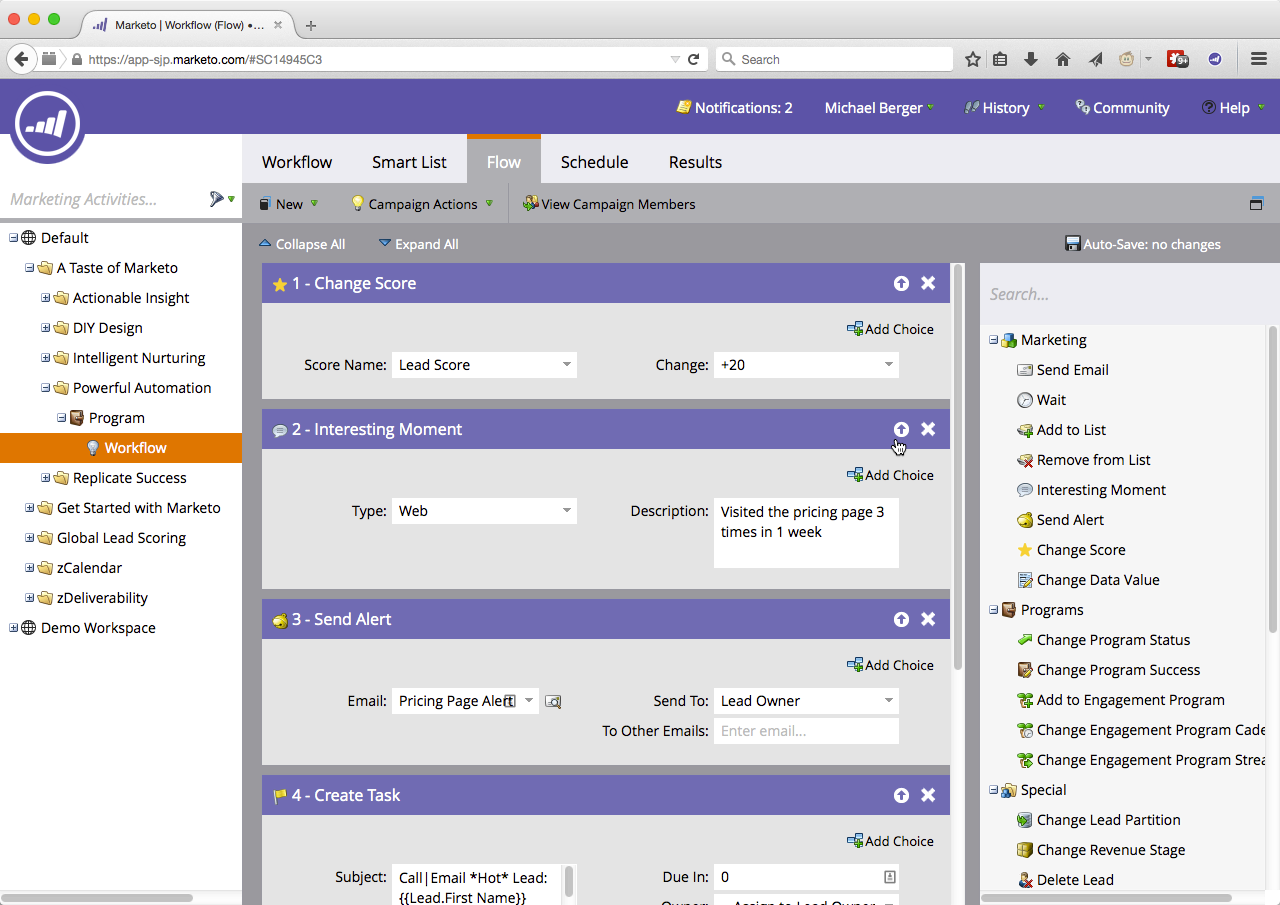
Marketo’s flow builder
Salesforce Marketing Cloud—SFMC is designed with omnichannel in mind. Its Journey Builder offers a drag-and-drop canvas where you can map out customer journeys visually. For example, you can create a flow: Day 1 send email, if no open by Day 3 then send SMS, if purchase then exit journey, else show a Facebook Ad—all in one interface. This is a big advantage.
SFMC can handle email, SMS, push notifications, ads, and more in these journeys. One challenge is that some channels or triggers need additional configuration (for instance, using an API event to start a journey from an external trigger).
Also, since data is not unified by default (unless you’ve implemented Salesforce’s CDP), ensuring each channel in the journey has the latest customer info might require extra integration. But overall, SFMC provides a strong framework for building omnichannel flows, especially if your data already lives in the Salesforce ecosystem.
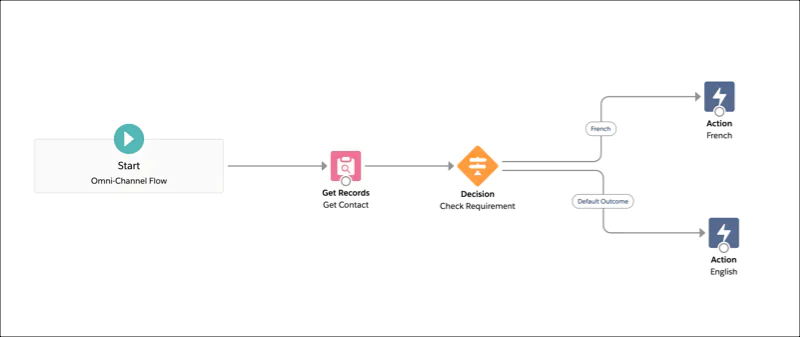
Salesforce Marketing Cloud’s flow builder
Maestra—Omnichannel automation is where Maestra truly stands out. It allows you to create one flow that spans all channels with ease. In Maestra’s journey builder, you can mix email, SMS, push, in-app messages, and even triggers for ads or offline events in a single timeline.
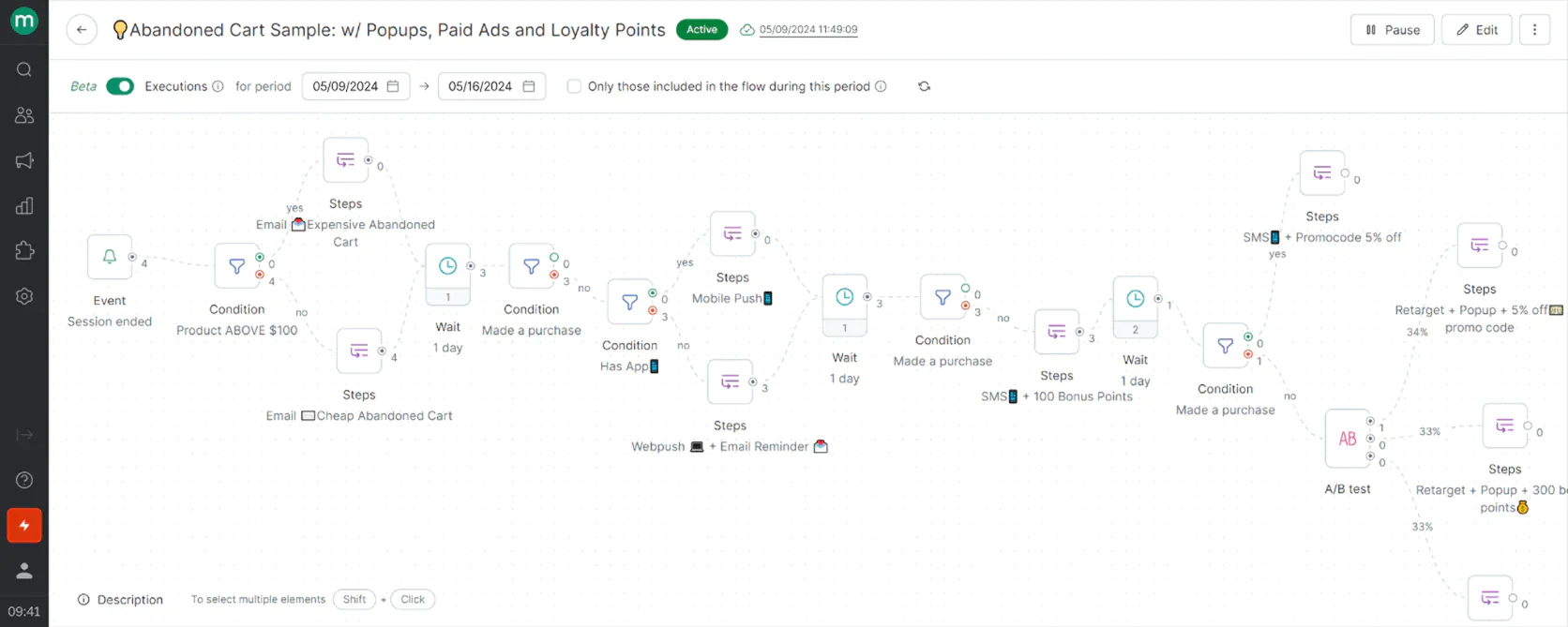
Maestra’s flow example: abandoned card flow with emails, mobile and web pushes, pop-ups, paid ads and loyalty points
All decision splits and delays consider real-time customer data from the CDP. This means your flow can do things like: if user is a VIP, show personalized homepage banner; if not, send loyalty sign-up email instead—all within one canvas.
Moreover, Maestra imposes no limits on the number of flows or complexity, and it’s built to avoid overlaps (so the same customer doesn’t get conflicting messages). The platform’s ability to maintain a cohesive context across channels (thanks to unified profiles) makes its omnichannel execution very smooth.
In fact, companies have been able to run dozens of complex automated flows concurrently through Maestra without issues. This capability far exceeds what you can do out-of-the-box with Marketo or SFMC without significant add-ons or custom integration.
Winner: Maestra—It delivers seamless, hyper-personalized omnichannel journeys that the others struggle to match.
Marketo vs Salesforce Marketing Cloud vs Maestra: Customer Data Management & Segmentation
Marketo
Salesforce Marketing Cloud
Maestra
⭐⭐⭐
⭐⭐⭐⭐
⭐⭐⭐⭐⭐
Marketo—Marketo maintains a central lead database, essentially a single table of people with various attributes (like name, email, company, etc.). All the behavioral data (email opens, web page visits, etc.) attaches to those lead records. Segmenting in Marketo is done via Smart Lists, which are filters you can set (e.g., “Lead source is Facebook AND Visited pricing page”).
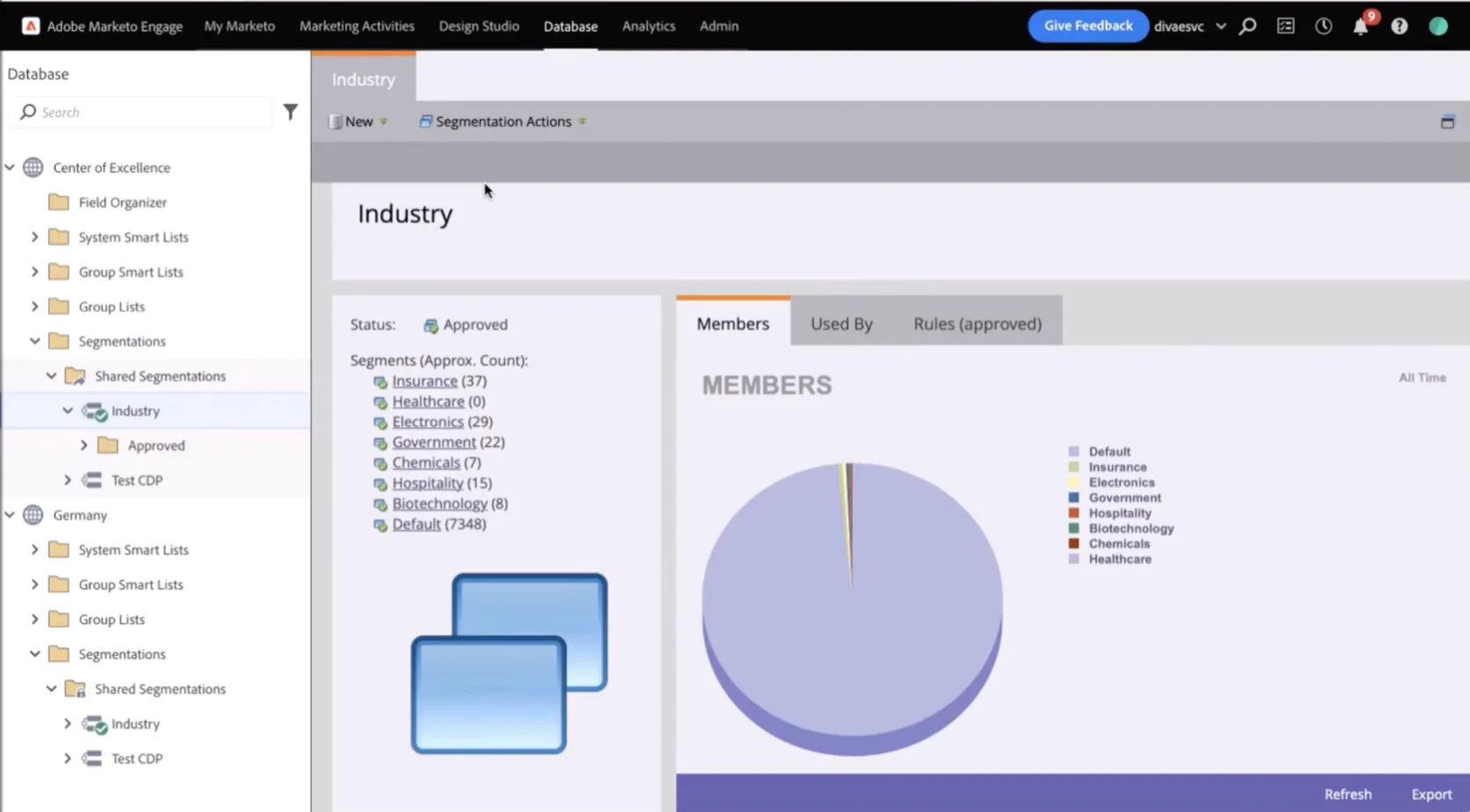
Segmentation in Marketo
Marketo’s segmentation is quite flexible in terms of criteria—you can use demographic fields, activity history, score values, etc., to build segments. It also supports dynamic segmentation in emails using “Segments” (static buckets like personas). However, Marketo’s data model is not a full Customer Data Platform; it doesn’t easily stitch together data from multiple sources beyond what you import.
If you have separate data (say in a product database), you typically have to import it into a custom field on the lead, which can be cumbersome. Marketo’s strength is lead scoring (ranking leads by readiness), which it does well for B2B, but its RFM analysis or advanced audience modeling isn’t native.
Overall, Marketo offers basic CDP-like functions (lists and filters) but on a limited data structure.
Salesforce Marketing Cloud—SFMC can act as a lightweight CDP especially when used with other Salesforce products. Out-of-the-box, SFMC uses Data Extensions, which are essentially tables, to store different sets of data (e.g., one DE for customers, one for orders, one for product catalog). This relational approach means it’s more flexible with data than Marketo’s single lead table.
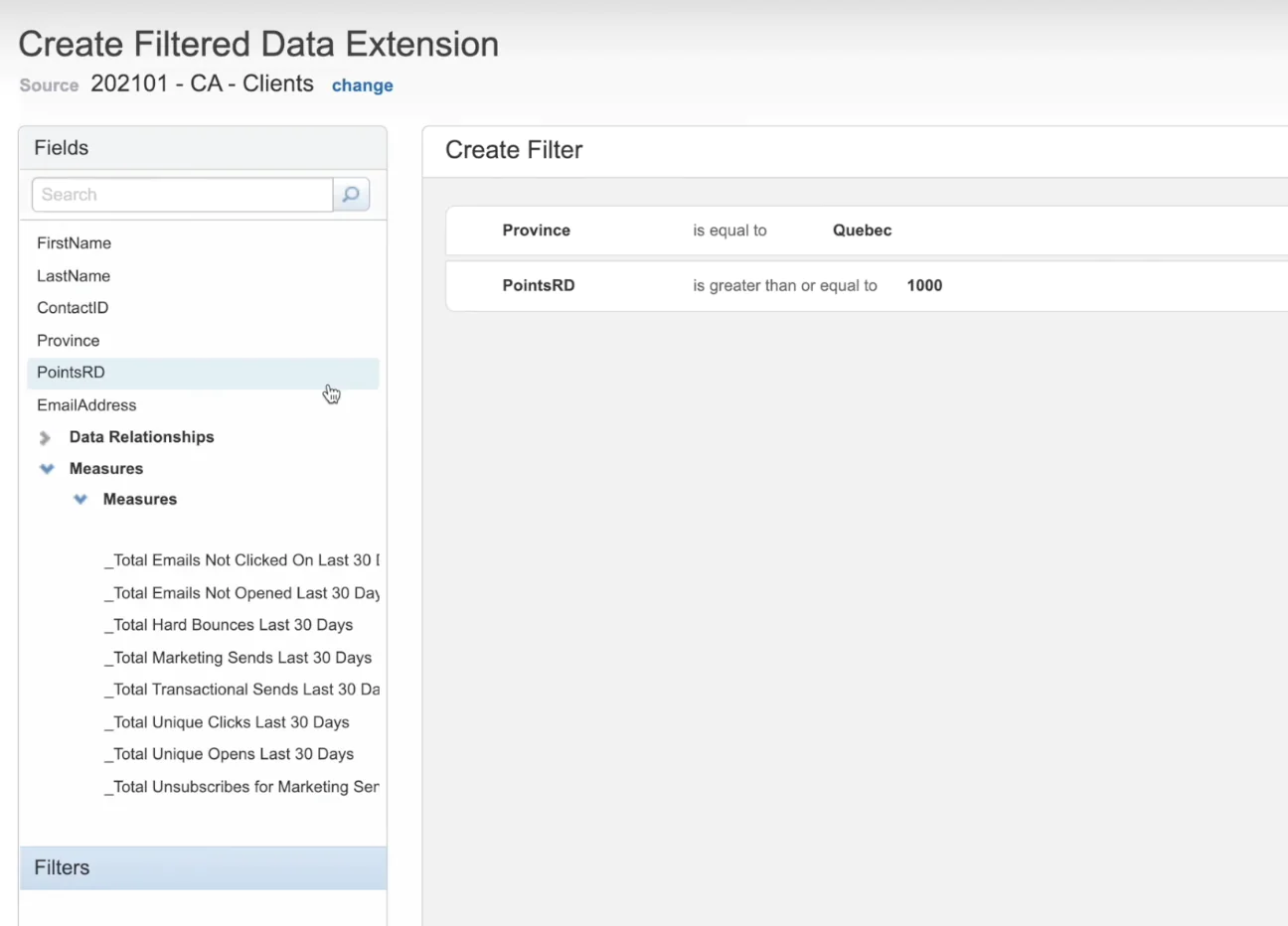
Salesforce Marketing Cloud: user segmentation
You can import purchase data, web behaviors, etc., into Data Extensions and then create segments using SQL queries or SFMC’s filter tools. If you have Salesforce’s Data Cloud (CDP), that can feed SFMC with unified profiles built from many sources. Without it, SFMC still allows complex segmentation, but it may require writing SQL or using Einstein AI for predictive audiences. The caveat is you need the skill to manage that data.
In summary, SFMC’s customer data management is powerful but can be complex: it offers more flexibility and data integration than Marketo, but fully leveraging it might require a dedicated data specialist or the use of Salesforce’s broader CRM/CDP.
Maestra—Maestra includes a real-time Customer Data Platform at its core. Every customer interaction online or offline can stream into Maestra, building a 360° profile automatically. The platform comes with a commerce-focused data model (for example, it understands orders and products as data types natively).
This means you can have segments like “Champions” based on purchase recency/frequency or “Browsed Category X but never purchased” without needing a separate data warehouse—Maestra computes those on the fly.

Maestra: user segmentation
It supports RFM segmentation out of the box, scoring customers by Recency, Frequency, Monetary and grouping them (champions, loyal, at-risk, etc.).
You can also create nested segments (e.g., from all “High spend” customers exclude those who engaged in the last 7 days to target lapsed high spenders)—without coding.
Another advanced feature is computed traits—you can define custom fields like “Average purchase value last 90 days” or “Has VIP tier = true/false” that update automatically, then use them in segments.
All of this happens in real time, so if a customer moves from one tier to another, Maestra can instantly switch the segments they belong to. In practice, Maestra’s CDP means marketers spend less time importing/exporting lists and more time directly acting on insights. It’s ideal for fine-tuned personalization because your segments are always up to date and incredibly specific.
Winner: Maestra—Its real-time CDP and rich segmentation tools are far ahead of what Marketo or SFMC provide natively.
Marketo vs Salesforce Marketing Cloud vs Maestra: Site Personalization
Marketo
Salesforce Marketing Cloud
Maestra
⭐⭐⭐
⭐⭐⭐⭐
⭐⭐⭐⭐⭐
Marketo—Marketo offers a product called Marketo Web Personalization (formerly Real-Time Personalization) which can personalize content on your website for known visitors. If a visitor is identified (for example, they clicked through an email or you’ve associated their cookie), Marketo can dynamically swap content based on segments. Common use cases are changing headlines or images on a landing page depending on industry or showing a special offer if the person is a lead vs. a new visitor.
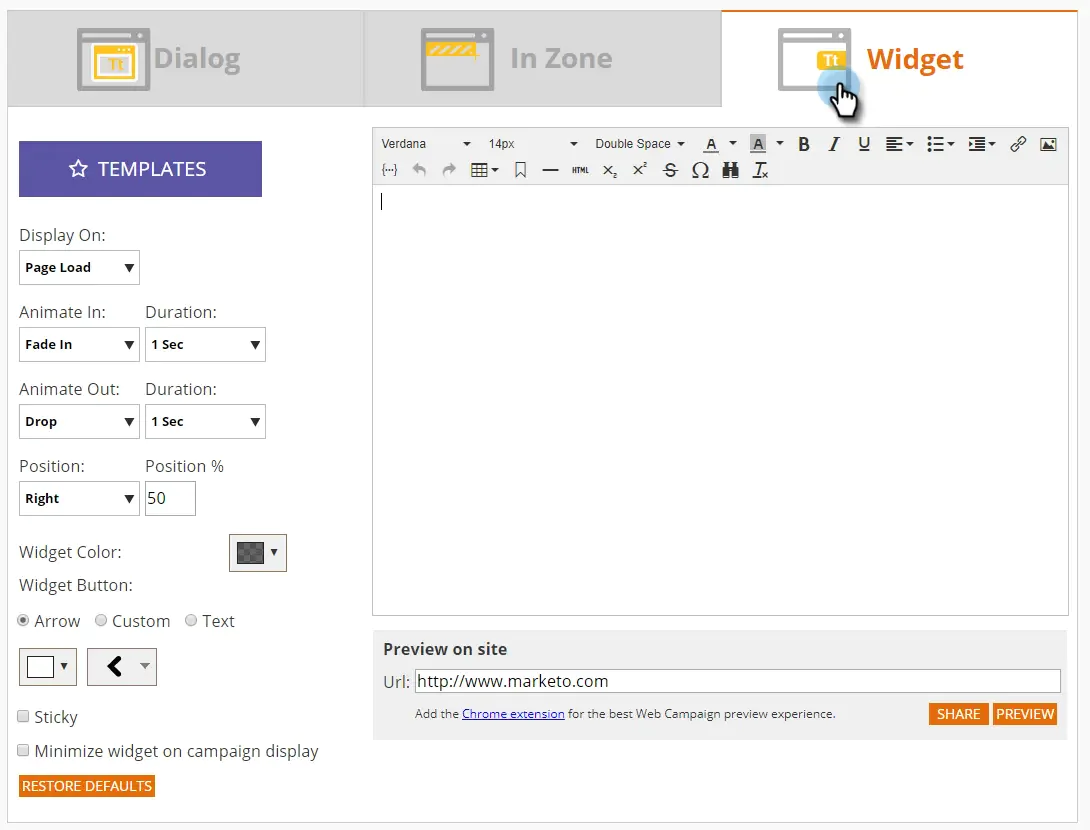
Widget settings in Marketo
Marketo can also do anonymous personalization using things like inferred company (via IP lookup) to tailor content for web visitors by industry. However, these capabilities often come as an add-on module and are not deeply AI-driven. They rely on rules you set up. For instance, you might set a rule: “If visitor is in Segment X, display Banner A instead of default.” This can boost conversion rates for known segments, but it’s not learning on its own. Testing and optimizing those experiences is also a manual process.
On the plus side, Marketo’s native integration with your forms and emails means that if someone fills out a Marketo form, you can immediately use that data to personalize subsequent pages (e.g., they select “Healthcare” industry on a form—you could instantly start showing them healthcare-related content on the next page).
In summary, Marketo does enable some level of web personalization but it’s rule-based and usually limited to either known leads or broad anonymous criteria, not the one-to-one predictive personalization.
Salesforce Marketing Cloud—Personalizing websites is primarily handled by Marketing Cloud Personalization (Interaction Studio) in the SFMC suite. This is a real-time personalization engine that can track each visitor’s behavior on your site and make dynamic decisions on what content to show.
Interaction Studio uses Einstein AI algorithms (often called “Einstein Recipes”) to do things like recommending the most relevant content or product for that individual. For example, if a user browses certain categories frequently, the site could start showing related products or a tailored promo banner reflecting that interest.
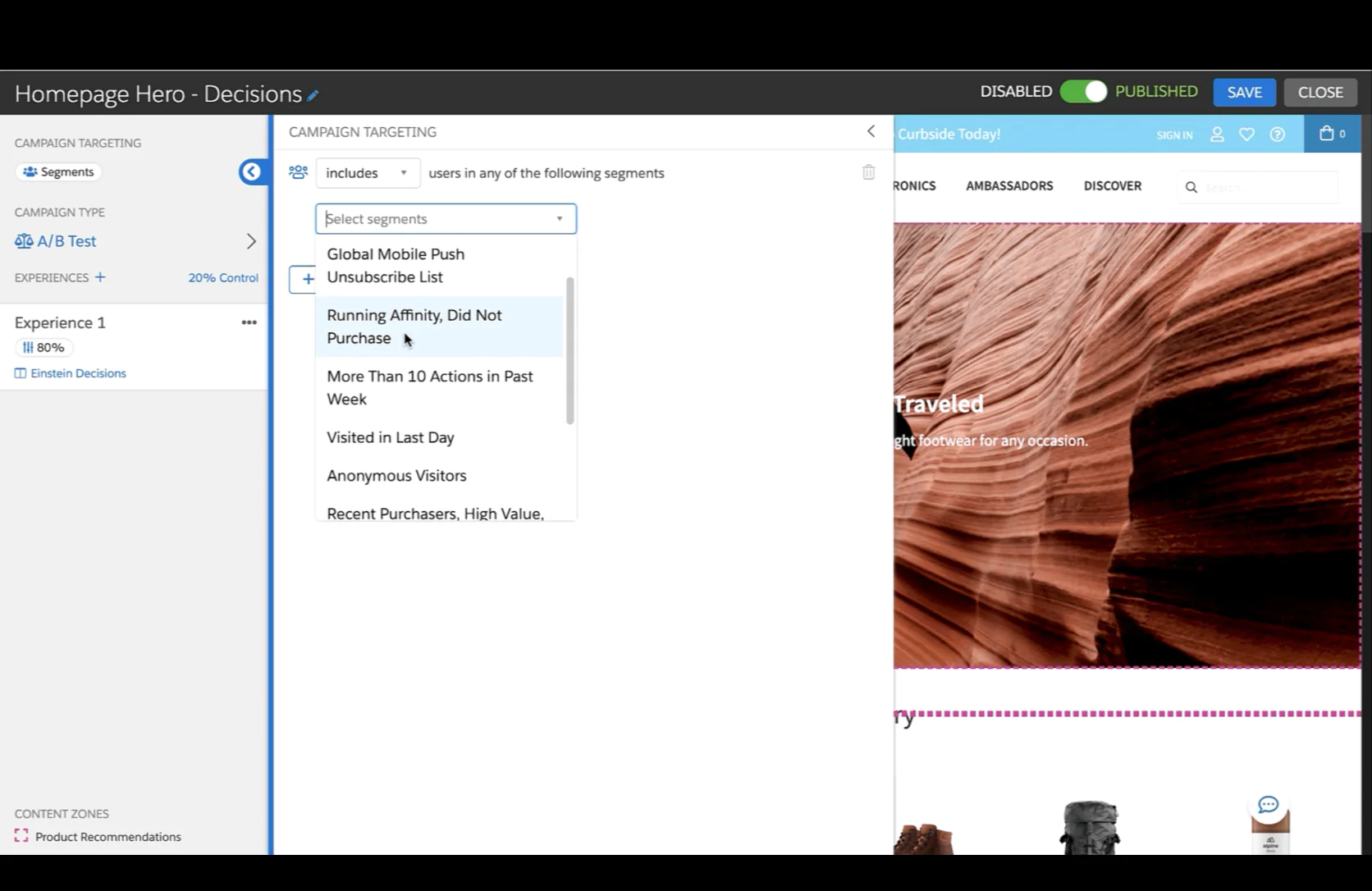
Homepage banner settings in Marketo
Interaction Studio also allows targeting based on segment and real-time triggers (like someone spending 5 minutes on a page could trigger a pop-up with an offer). The key advantage is that it’s quite sophisticated: it builds a profile for even anonymous visitors and can personalize content at first touch using look-alike patterns. However, not every SFMC customer has this module, as it’s an additional cost. Without it, SFMC users might rely on simpler tools like CMS personalization or A/B testing content manually.
Another SFMC capability is open-time email personalization (where the content of an email can change depending on when/where it’s opened)—while not exactly site personalization, it shows Salesforce’s strength in contextual content. If we focus on websites: if you invest in Salesforce’s personalization component, you get one of the most powerful web personalization solutions, tightly integrated with the rest of your marketing data. If not, SFMC itself doesn’t do much for your website out-of-the-box. So there’s a bit of a split: great capability, but at additional investment.
Enlightened Equipment Achieves 15% Website Conversion Growth with AI-Powered Product Recommendations
Maestra—Maestra includes real-time site personalization features without needing extra add-ons. Because its CDP is tracking visitors on your site (via a script you install, similar to how you’d install Google Analytics or a chat widget), Maestra knows what pages people view, items they add to cart, etc. It then lets you create personalization rules or use its AI suggestions.
For example, you can easily set up: If visitor is in Segment “Interested in Shoes”, change homepage banner to show shoe category. Or if a returning visitor has an item in cart (abandoned cart), show a “Welcome back—your cart is waiting” message. These can be done through Maestra’s interface.
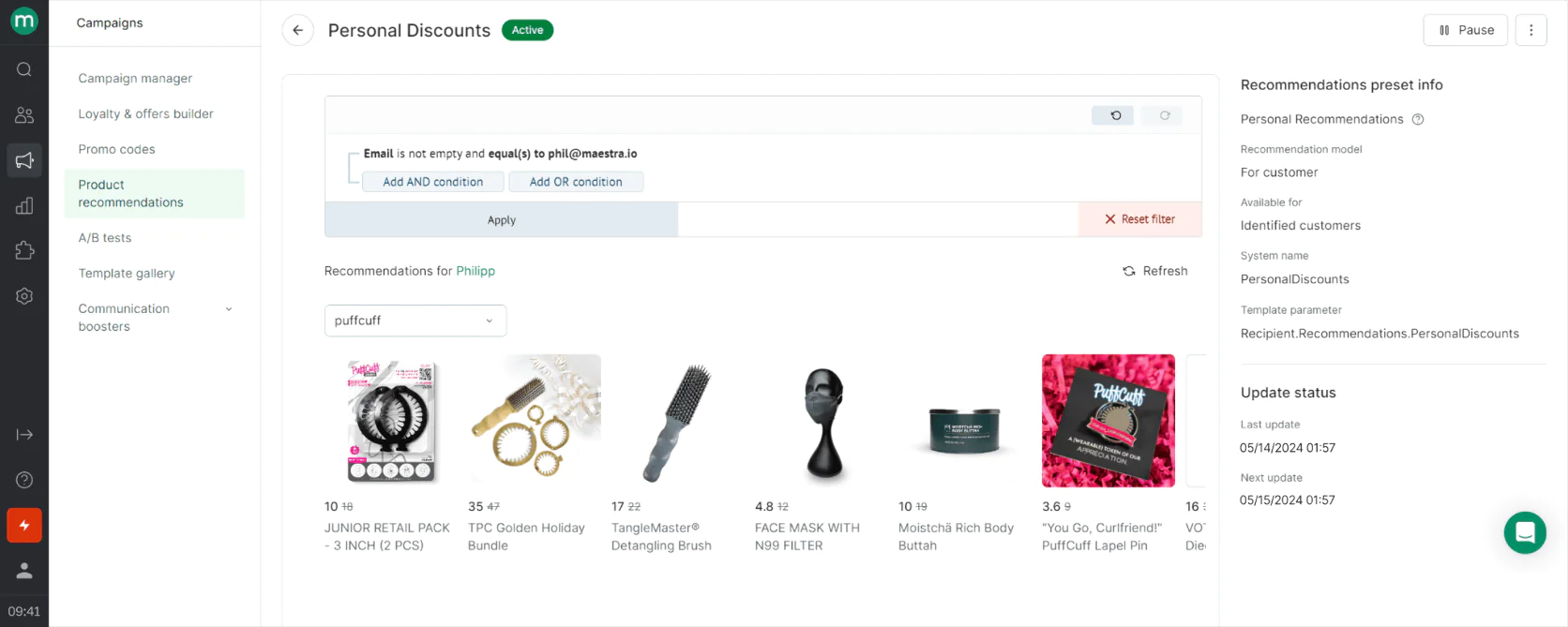
Personal product recommendations in Maestra
For more AI-driven personalization, Maestra’s product recommendation engine (covered in the next section) ties in here—e.g., showing a “Recommended for you” product widget on the homepage for each visitor.
A big benefit of Maestra is in-session updates: it can change content on the fly as the visitor is browsing. If you click a couple of products, the site can immediately start highlighting similar items, even without a page reload, thanks to Maestra’s real-time triggers.
Additionally, Maestra offers personalized pop-ups and embeds: you can create pop-ups that only show for certain segments or behaviors (say, a special discount pop-up for first-time visitors from a specific ad campaign). These are all managed in Maestra, not requiring separate personalization software.
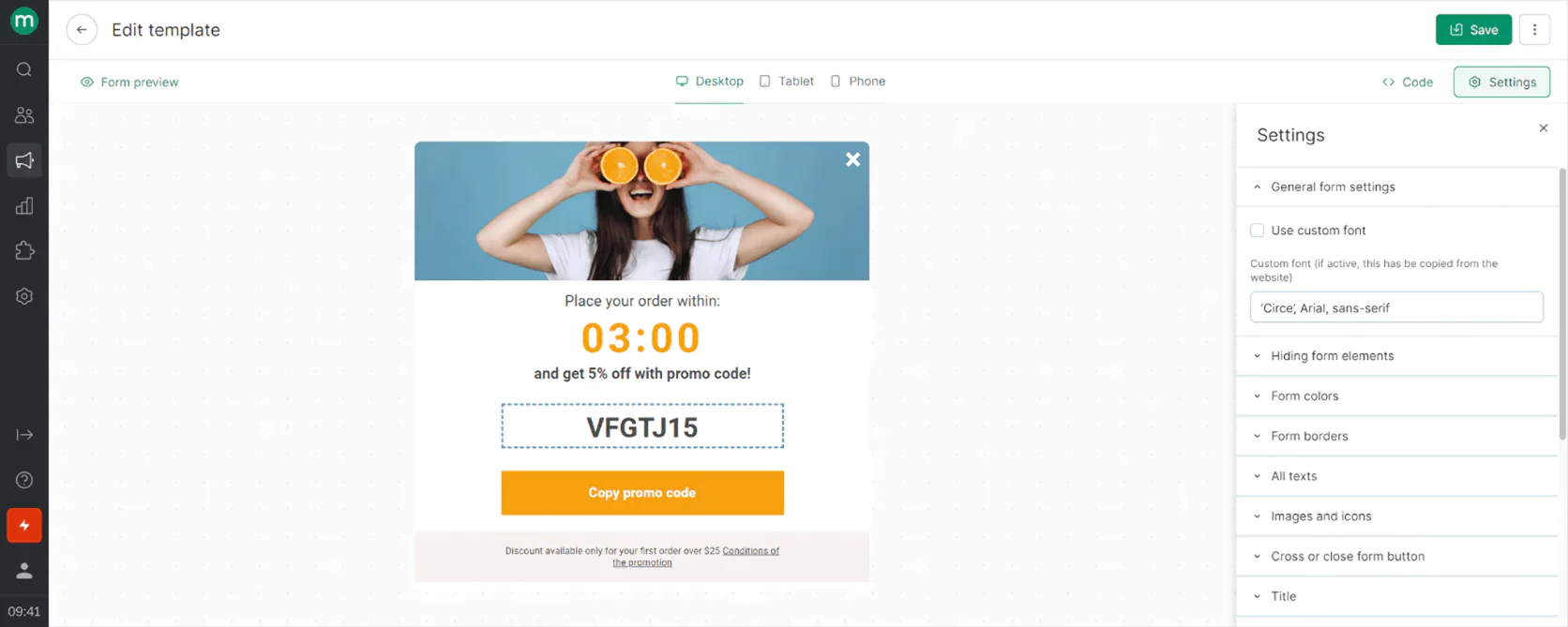
Maestra’s pop-up template editing
Essentially, Maestra brings the kind of personalization usually seen in enterprise tools directly into a unified platform for mid-market users. It empowers you to treat each website visitor almost like you’re personalizing an email—using what you know about them to tailor what they see in real time.
Winner: Maestra—Real-time, in-session website personalization across devices makes Maestra the clear leader in this category.
Marketo vs Salesforce Marketing Cloud vs Maestra: Email
Marketo
Salesforce Marketing Cloud
Maestra
⭐⭐⭐⭐
⭐⭐⭐⭐⭐
⭐⭐⭐⭐⭐
Marketo—Marketo made its name in email automation. Users can design emails with a WYSIWYG editor, set up triggered campaigns (like welcome series, drip nurtures), and do basic A/B testing on subject lines or content. One of Marketo’s strengths is its deliverability tools—it provides some tools for managing sender reputation, and you can use shared or dedicated IPs. Marketo’s email editor supports tokens for personalization (e.g., Dear {{First Name}}) and conditional content blocks for different segments, though advanced personalization (e.g., AI-driven content) is limited compared to the other two platforms. It also integrates with other Adobe tools now, so you can pull in content from Adobe Experience Manager or use Adobe Analytics for deeper insight.
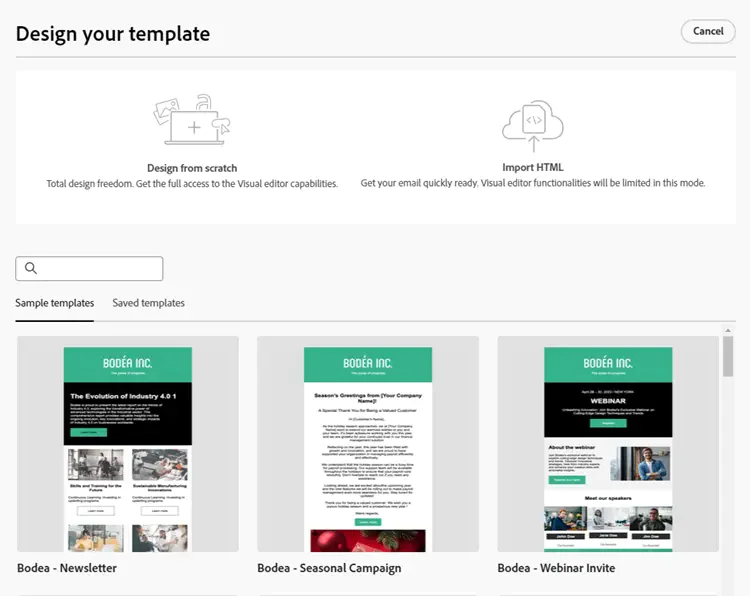
Email templates in Marketo
One limitation historically was email automation complexity—Marketo is fantastic for multi-email drip campaigns over time, but less straightforward for event-driven multi-channel sends. However, if we focus just on email: Marketo can scale to millions of emails, offers decent email reporting (open, click, unsubscribe, deliver, etc.), and has features like head start (to pre-send batches to improve delivery timing).
Many B2B organizations rely on Marketo to run complex lead nurture tracks via email and appreciate its stability and integration with CRM (to know who to email when). It’s a reliable workhorse for email, albeit with a UI that can feel dated and some quirks (like the infamous email editor needing time to master).
Overall, Marketo’s email capabilities are very robust, with the main gaps being in hyper-personalization (where you’d need scripting) and real-time adaptability (some triggers aren’t instant).
Salesforce Marketing Cloud—SFMC is often considered a leader in email marketing for large consumer sends. With SFMC’s Email Studio, you can manage huge subscriber lists and blast out campaigns that are highly segmented.
The platform shines in the enterprise context—it supports complex campaigns with multiple versions of an email for different segments through dynamic content and AMPscript. AMPscript is SFMC’s scripting language to personalize and modify email content at send time; it’s very powerful (you can pull in related data, do conditional logic, even math operations to calculate values), but it requires coding knowledge.
SFMC also provides Einstein engagement scores, predicting the best time to send to each user and likelihood to open, which marketers can use to optimize send times.
Another notable feature is the Email Interaction in Journey Builder for triggered sends, which can do things like listen for a customer action (purchase, signup) and send an appropriate email in near-real-time. For design, SFMC has a Content Builder with drag-and-drop components, so non-coders can build emails too, though utilizing the full power often involves HTML/AMPscript. On analytics, SFMC offers dashboards and even heatmaps of click activity in emails.
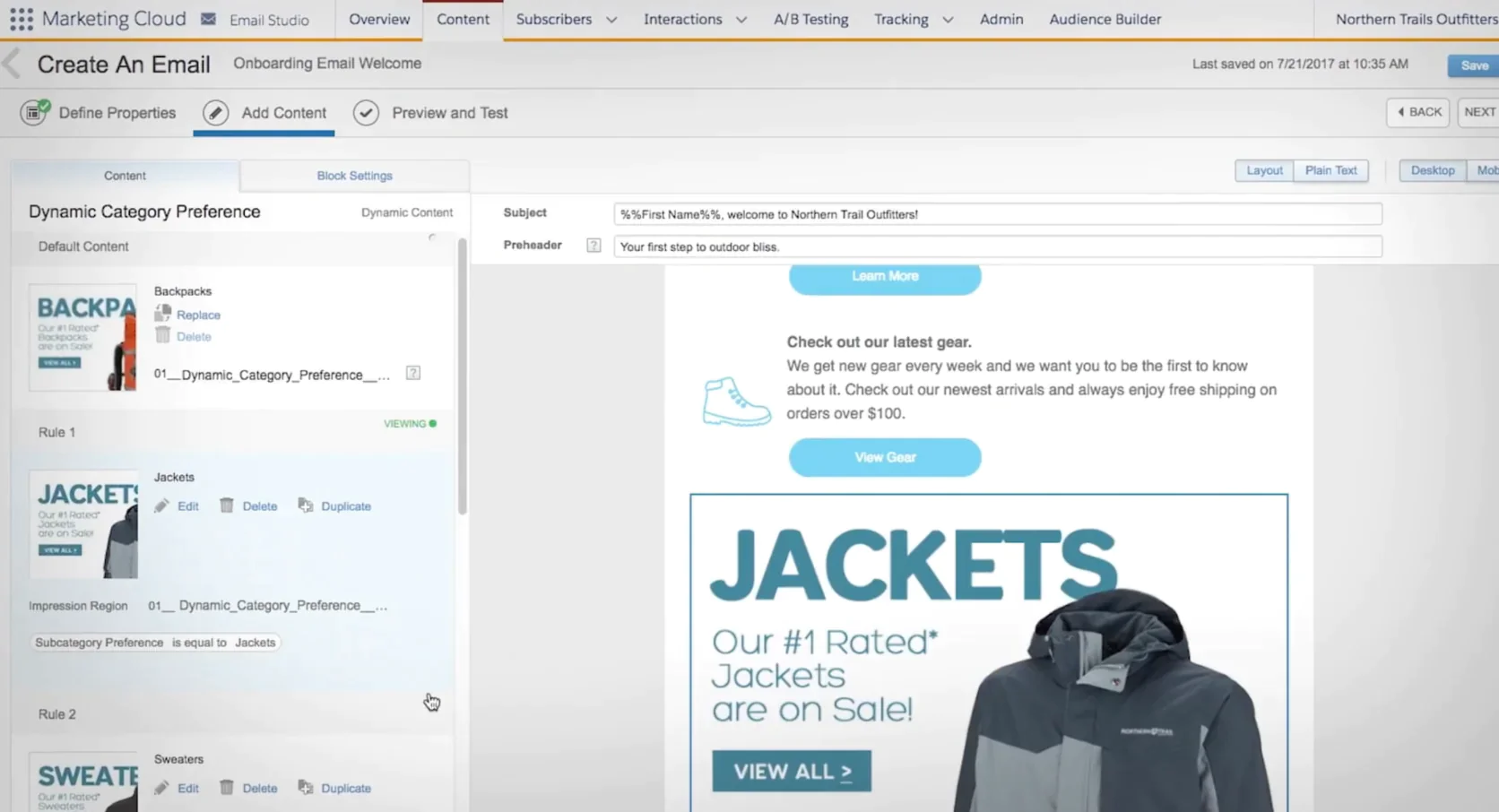
Salesforce Marketing Cloud’s email builder
And because SFMC can unify cross-channel, you can measure email as part of the customer’s overall journey. If deliverability is a concern, SFMC has options like Return Path integration and dedicated IP warming tools.
The only downside mentioned by some users is that SFMC’s breadth makes it a bit complex—setting up a simple newsletter send might feel heavier than in leaner tools, and mastering AMPscript or the data views for reporting might require training. Still, for capability, SFMC’s email toolset is top-tier; it’s designed to handle sophisticated, large-scale email operations for enterprises.
Maestra—Maestra approaches email with a focus on personalization and efficiency. The email builder is drag-and-drop, similar to others, but the code it produces is optimized to be as light as possible (to avoid clipping in Gmail, which happens when emails are too large). Maestra automatically manages things like email footer details, preference links, and deliverability settings (SPF/DKIM) during onboarding.
Where Maestra truly differentiates is using its unified data for personalization: in the email editor, you can insert dynamic placeholders for any customer attribute (even complex ones like “total points balance” or “last product viewed”) since all that data is in the CDP.

Maestra’s visual email composer
You can also conditionally show or hide sections of an email based on segment membership or behaviors. For example, one email template can adapt to multiple audiences—first-time buyers see a welcome offer banner, repeat customers see a loyalty points summary, etc., all in one send.
Another benefit is real-time segmentation at send: Maestra will evaluate whom to send to at the moment of sending, so if someone just purchased and no longer qualifies for a promo email, they can be excluded on the fly. This reduces embarrassing moments like emailing a customer a “10% off your first purchase” after they’ve already bought something.
Maestra’s sending infrastructure can handle high volume and includes built-in A/B testing where you can set test size and winning metrics (open, click, conversion). Reporting is integrated with its analytics suite, meaning you can attribute revenue to each email or see downstream effects (did an email lead to higher site engagement over the next week, etc.). A novel feature Maestra offers is AMP for Email support, allowing interactive email content (like carousels or forms inside an email)—something very few platforms support fully.
Winner: Maestra—Maestra’s email capabilities cover everything most marketers need (and then some), but the standout aspect is how easily you can personalize at scale using unified data, without needing to write code or scripts.
Marketo vs Salesforce Marketing Cloud vs Maestra: SMS
Marketo
Salesforce Marketing Cloud
Maestra
⭐⭐⭐⭐
⭐⭐⭐⭐
⭐⭐⭐⭐⭐
Marketo—Historically, Marketo did not have native SMS, and users integrated third-party SMS tools via webhooks or LaunchPoint partners. Recently, Marketo (Adobe) has introduced some native SMS functionality, but it often requires the Adobe Journey Optimizer or Twilio integration in the backend. If you have it set up, Marketo can send outbound texts and even listen for replies (to a limited extent, like STOP for opt-outs).
Personalization in the SMS is limited to inserting tokens (like first name or a discount code). There’s no dedicated SMS automation interface; it’s all in the same marketing campaign UI. This means you won’t get fancy SMS-specific analytics aside from what you log.
In short, Marketo can trigger SMS alerts (for example, send a text when a lead status changes or as part of a nurture stream), but it’s not as plug-and-play as email. Many Marketo users still rely on external tools for robust SMS (like Telnyx, Twilio, etc.). So while Marketo SMS exists, think of it as barebones texting—fine for simple reminders or follow-ups, not a full-featured SMS marketing platform.
Salesforce Marketing Cloud—SMS is a first-class channel in SFMC through its MobileConnect component. You can acquire short codes or long codes through SFMC and manage opt-ins/opt-outs directly.

Creating a message in Salesforce Marketing Cloud
SFMC provides templates for common SMS use cases, like keyword responses (e.g., a user texts “JOIN” and SFMC automatically replies with a configured message and opts them in). It supports concatenated messages (longer than 160 chars) and can handle MMS (picture messages) if needed.

SMS templates in Salesforce Marketing Cloud
In Journey Builder, adding an SMS is as simple as dragging an SMS activity and writing the text—you can include personalization strings like %%FirstName%% easily. There’s also support for global SMS compliance (different opt-in rules per country).
For two-way messaging, SFMC can capture replies and trigger different journeys based on them (for example, if a customer replies “HELP”, you can branch to a help response).
SFMC’s strength is linking SMS with other data—you could target an SMS to someone based on their email engagement or purchase history, since all that data can sit in SFMC. Analytics for SMS includes delivery rates, bounce rates, and engagement (if using tracked links in the SMS, you’ll see clicks).
One neat feature is SMS Conversations in MobileConnect where you can set up automated back-and-forth interactions (like a mini chatbot via text).
While SFMC SMS works very well, do note that it often incurs additional messaging fees and sometimes requires working with Salesforce to provision short codes which can take time. But once running, SFMC’s SMS capabilities are powerful and on par with dedicated SMS platforms—plus integrated with your customer journeys.
Maestra—SMS in Maestra is built into the same campaign builder as everything else, ensuring a unified experience.
A big advantage is that Maestra can use the same segmentation criteria for SMS as for email or push. For example, you can easily send an SMS only to customers who haven’t opened the last 3 emails or who are currently in a specific promotion segment.
Maestra supports both one-off bulk SMS campaigns (e.g., a holiday sale blast to all subscribed SMS contacts) and automated SMS steps in workflows (e.g., after a purchase, send an order confirmation SMS and a follow-up review request SMS a week later). All of this is set up without coding—just selecting the audience and drafting the message.
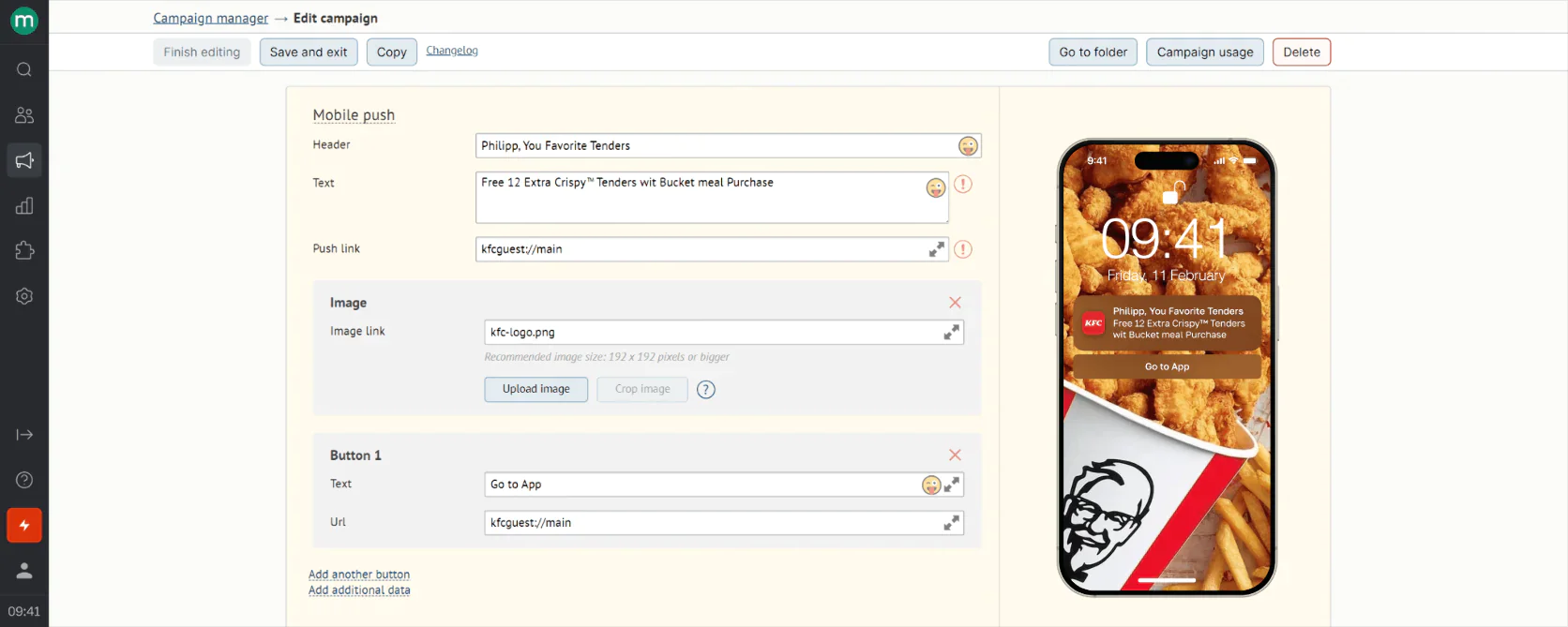
Creating a message in Maestra
Personalization is straightforward: you can insert any personal data (name, etc.) or even dynamic content like a unique promo code. Maestra automatically handles link shortening for any URLs you include, which also enables click tracking on SMS.
One of the valuable features is cross-device tracking—if a user clicks the SMS link, Maestra can attribute that back to their profile (even if it opens the website, it knows it’s them via the tracking link), so you see the full path of engagement.
Another feature: Maestra can manage frequency capping across channels, so if a person got two emails this week, maybe you skip a non-urgent SMS to avoid spamming—these kinds of holistic rules can be set platform-wide.
In terms of deliverability, Maestra partners with reliable SMS aggregators to ensure high deliverability rates and provides metrics like sent, delivered, and failed for each send. It also handles opt-outs automatically when a user texts “STOP” (it flags the profile as unsubscribed from SMS).
Winner: Maestra—Maestra treats SMS as an integral channel, giving it the same attention as email. This is a step above how Marketo treats SMS and on par with SFMC’s capabilities, but likely with a simpler learning curve and lower cost per message.
Marketo vs Salesforce Marketing Cloud vs Maestra: Website and Email Product Recommendations
Marketo
Salesforce Marketing Cloud
Maestra
⭐
⭐⭐⭐⭐
⭐⭐⭐⭐⭐
Marketo—Marketo itself does not have a product recommendation engine. Since Marketo is not an e-commerce platform, it doesn’t inherently know your product catalog or have algorithms to suggest products. Adobe (Marketo’s parent) does offer Adobe Target and other products for personalized content, but that’s outside Marketo.
For email recommendations, Marketo can send emails triggered by product views or purchases (like a “You looked at X, you might like Y” email) if you set up those triggers and perhaps manually define Y for X. But it won’t automatically pick personalized Y for each person beyond what data you feed it.
In summary, Marketo’s role in product recommendations is mostly as a messenger—it can deliver recommendation content, but you need another system to generate that content. It’s a gap if you’re looking for an all-in-one solution.
Salesforce Marketing Cloud—SFMC, when coupled with Einstein Recommendations, becomes quite capable in this area. Einstein can operate on your product catalog and user behavior data to produce recommendations. For instance, in Email Studio, you can drag an “Einstein Recommendations” content block into an email, and it will populate, say, 3 product images with links, tailored to each recipient. You can define strategies (called recipes) like “Trending products in category user browsed” or “Frequently bought together with the item user purchased.”
On the website side, if you have Interaction Studio (Marketing Cloud Personalization), you can similarly display recommended products or content on your site for each user, using templates that decide what to show. This is all quite advanced: it leverages machine learning on the backend. If a user is new, Einstein might show best-sellers; if it has some data, it will get more personalized.
The challenge is setting it up—you need to import your product catalog into SFMC and tag your content, and implement tracking so Einstein knows what each user is doing. Salesforce provides guides and even an “Einstein Recommendations Accelerator” to help set these up. Once running, marketers can insert recommendations without coding, just by choosing a recommendation block and a recipe.

Salesforce Marketing Cloud’s Einstein product recommendations setup
Importantly, Einstein can be used in both email and web contexts (and even within mobile app messages if you integrate). Many big retailers use SFMC to send emails like “Recommended for you” or “You might also like” and see good results.
If you don’t use Einstein, SFMC itself doesn’t magically recommend products—you’d fallback to manual suggestions. But since Einstein is part of the SFMC suite (for an extra cost), we consider that as SFMC’s offering. It’s powerful but requires an investment in setup and catalog management.
Maestra—Maestra includes built-in AI product recommendations explicitly tailored for e-commerce use-cases. When you connect Maestra to your store (via Shopify, Magento, etc.), it ingests your product catalog and sales data. From there, Maestra’s algorithms start learning patterns like “customers who bought X often buy Y” or “this customer tends to favor brand Z.”
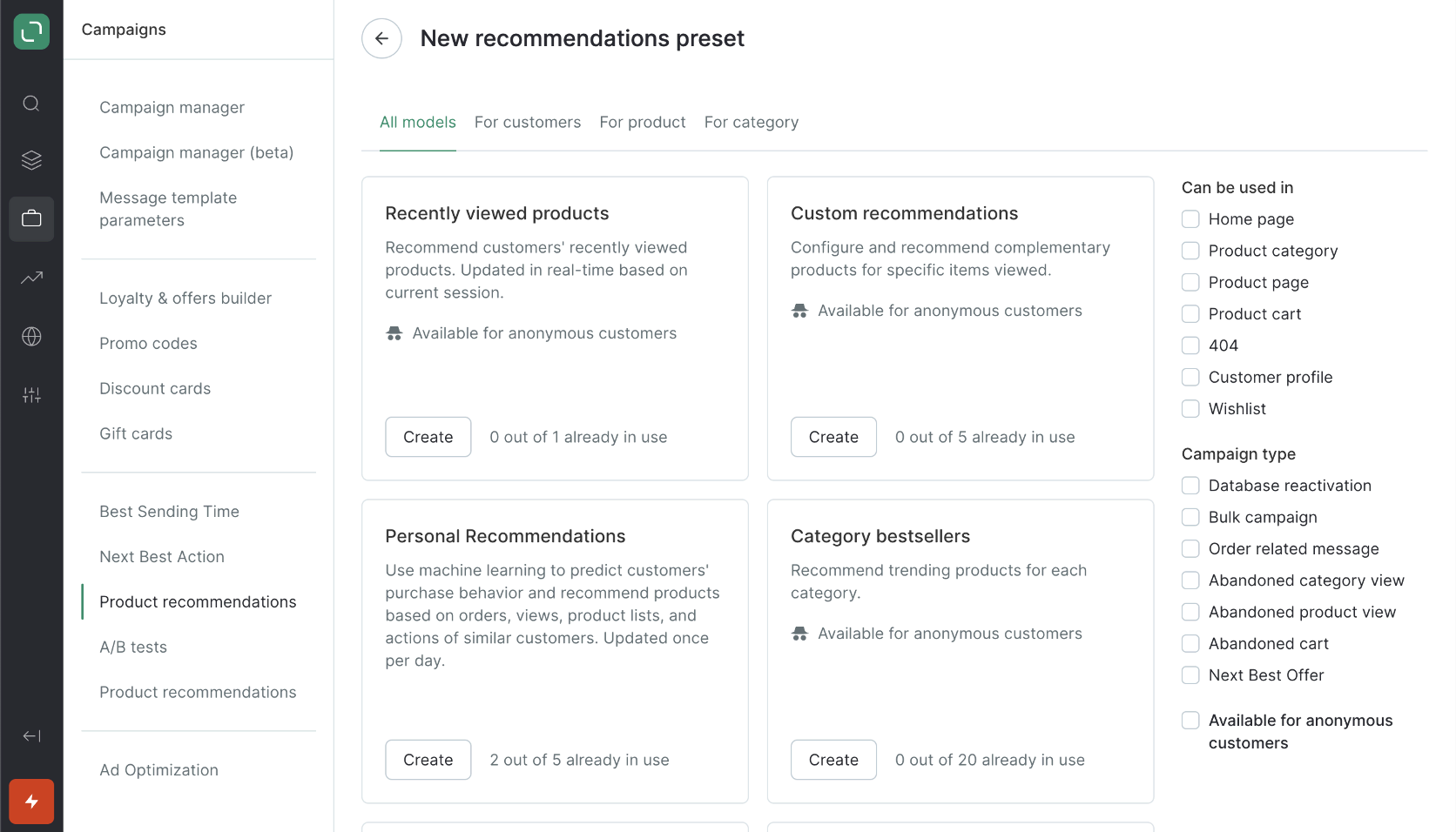
Maestra’s product recommendation presets
You have control over the strategy: Maestra offers around 14 pre-built algorithms, such as “Trending Now,” “New Arrivals for You,” “Because You Viewed X…,” “Frequently Bought Together,” “You May Like (Collaborative Filtering),” etc. You can pick which strategy suits the context.
A nice aspect is you can also apply business rules—for instance, exclude out-of-stock items, or always include at least one item from the same category as the last purchased product. This hybrid of AI + rules gives marketers confidence (for example, avoiding recommending a product the user already bought, unless it’s something bought often).
Maestra’s recommendations update in real time—if a product’s stock changes or a user’s behavior changes (they suddenly show interest in a new category), the recs adjust. And since it’s unified, the recommendations can be consistent across email and web.
For example, the email might say “We picked these for you” and when they click to the site, the homepage could show the same or related picks in a widget, creating a cohesive experience. Given that neither Marketo nor base SFMC provide this out of the box, Maestra giving it natively is a big plus for any retailer using it. It essentially removes the need for a separate personalization engine.
Winner: Maestra—AI-powered product recommendations across site and email without the need for separate tools or manual setup.
Marketo vs Salesforce Marketing Cloud vs Maestra: Promotions and Referrals
Marketo
Salesforce Marketing Cloud
Maestra
⭐
⭐
⭐⭐⭐⭐⭐
Marketo—Marketo does not have a built-in referral program system (no tracking of referrals, unique invite links, etc.). If you want to run a referral program (“give $10, get $10” type of thing), you’d need an external tool (like ReferralCandy, for example) and then use Marketo to email the referral invitations or follow-ups.
Marketo can generate unique codes for promotions if you load a list of codes into it and use tokens to assign them—some marketers do that for one-time use coupon codes in emails. But it’s a bit manual; you have to import the codes and ensure Marketo pulls one per person.
So Marketo is essentially just the communicator of promotions, not the manager of them. Companies using Marketo for promotions often rely on their e-commerce platform to manage the promo logic and just use Marketo to distribute promo codes and reminders.
Salesforce Marketing Cloud—SFMC itself doesn’t manage promotions or referral tracking either. Like Marketo, it’s focused on communication.
However, being part of Salesforce, there are solutions: for instance, Salesforce Loyalty Management is a separate product that can handle referrals and promotions logic, which could be connected to SFMC.
Referrals would be handled similar to Marketo—either through a separate referral tool or maybe by using Salesforce Sales/Service Cloud to track referrals, then SFMC to send referral invites. One advantage in SFMC is if you have all data connected, you might segment differently for promotions, like finding loyal customers to send an exclusive promo. But the heavy lifting of “ensuring each referral gets credit” is outside SFMC’s scope.
Maestra—Maestra includes tools to create and manage promotional campaigns and referral programs intrinsically. For referrals, you can set up a program where each customer gets a unique referral link or code to share. Maestra will generate these codes, track when they are used by a friend, and automatically credit the referrer (e.g., “Friend purchased, give referrer 100 points or a $10 coupon”).
All of this is tracked under that customer’s profile in Maestra (so you might see, for example, John Doe referred 3 friends who purchased, so John has 3 referral rewards pending). Marketers can configure the reward structure easily—no coding, just set the conditions and rewards.
On the promotions side, Maestra shines by letting you orchestrate complex promotion rules and sync them across channels. For example, you could set up a promotion: “Free shipping on orders over $100 this weekend for VIP members.” In Maestra, you’d define that promo (possibly also in your e-commerce system for the checkout logic), and then Maestra can ensure that all VIP members get an email and an SMS about it, the website shows a banner about free shipping (only visible to VIPs when they log in, perhaps), and the promo ends automatically on Monday.

Maestra’s promotions rule engine
Maestra can even do things like “gradually increasing offers”: for a segment of at-risk customers, first it might show a 10% off, if they don’t purchase in a week, bump to 15%, etc., all automatically. Because these promotion rules are integrated, Maestra will avoid conflicts (not showing two different offers to the same person at once).
You also get analytics on promotions—e.g., how many used, who responded, ROI of a promo campaign—which normally is siloed elsewhere. In short, Maestra acts as both the brains and the messenger for promotions/referrals: it can implement marketing logic that the other two cannot without external help. This reduces the need for separate loyalty/referral apps.
Winner: Maestra—It’s far ahead in enabling marketers to actually configure referral programs and promotions and have the system execute them across channels.
Marketo vs Salesforce Marketing Cloud vs Maestra: Loyalty Programs
Marketo
Salesforce Marketing Cloud
Maestra
⭐
⭐
⭐⭐⭐⭐⭐
Marketo—Marketo does not provide any loyalty program functionality. If a company wants to run a loyalty program, that system would live outside Marketo. Marketo could then be used to send loyalty-related communications (like “You have X points” emails) if the loyalty data is imported into Marketo.
Salesforce Marketing Cloud—Similar to Marketo, SFMC doesn’t natively run loyalty programs.
However, Salesforce has a separate product called Salesforce Loyalty Management (part of Salesforce Service Cloud), and many companies use Salesforce CRM to store loyalty status. In such cases, SFMC can access those data fields (points, tier) via Marketing Cloud Connect. With that integration, SFMC can send sophisticated loyalty emails (like monthly point summaries, tier upgrade congratulations, reward available notifications) relatively easily because it can personalize content with those loyalty fields. But the actual computation of points and tier changes is done by the other Salesforce system or an external system.
As a platform, SFMC is not a loyalty engine. It won’t award points or manage reward catalogs by itself. The Salesforce ecosystem at large can cover loyalty (with additional products), but strictly SFMC’s role is to leverage loyalty data in marketing communications, which it does well when integrated.
Maestra—Maestra includes a full loyalty and rewards module natively. This means you can launch a points-based loyalty program directly from Maestra without needing a third-party tool. Key features include: awarding points for various actions (purchases, signing up, birthdays, referrals as mentioned, writing a review, etc.), defining VIP tiers based on point thresholds or other criteria (e.g., tiers like Silver, Gold with different perks), and managing reward options (like what points can be redeemed for).

Maestra’s promotions rule engine
In Maestra, all of this ties into the customer profile—each profile can show current points, tier, and lifetime value. Because it’s built-in, you can easily do things like: Segment: All customers with >500 points (to maybe send them a “use your points” reminder), or Trigger: When a customer hits 1000 points, automatically send a VIP welcome email and move them to Gold tier.
Maestra can also handle point expiration if needed (expiring points after X time to drive urgency, a common loyalty tactic). For redemption, Maestra can generate unique coupon codes for rewards.
The benefit is that loyalty stops being a separate silo—your loyalty data and marketing data are one and the same. Customers see unified messaging: the emails or SMS they get can include their point balance dynamically, the website can show a loyalty widget, and all of it is orchestrated by Maestra. This encourages customers to engage more, as the program is front-and-center.

Maestra’s Loyalty Program dashboard
None of that is possible out-of-the-box with Marketo or SFMC. So for any brand where a loyalty program is central to retention, Maestra provides a huge advantage by having those features built in. You’re essentially getting a loyalty platform bundled with your marketing platform.
Winner: Maestra—A fully integrated loyalty engine with points, tiers, and rewards baked directly into every campaign.
Marketo vs Salesforce Marketing Cloud vs Maestra: Mobile and Web Push Notifications
Marketo
Salesforce Marketing Cloud
Maestra
⭐⭐
⭐⭐⭐⭐
⭐⭐⭐⭐⭐
Marketo—Marketo’s capabilities for push notifications come from what was known as Marketo Mobile Engagement, an add-on that provides SDKs for iOS/Android. If you integrate that SDK into your mobile app, Marketo can send push notifications to those app users.
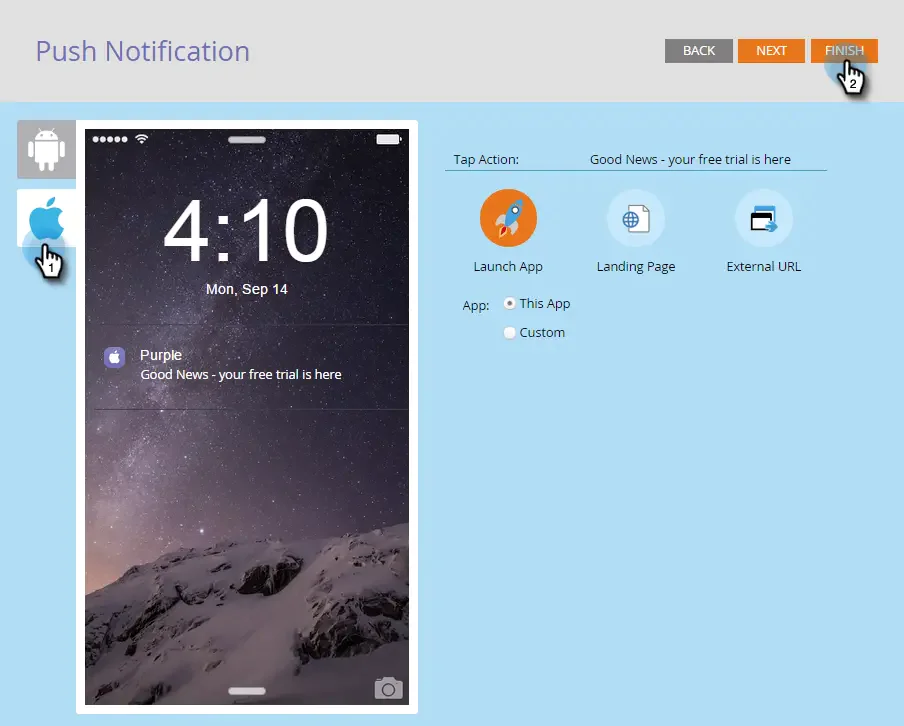
Marketo’s mobile push editor
You would create a “Push Notification” asset in Marketo, similar to creating an email, and you can segment and trigger it using the same Smart Campaign system. This means push can be part of Marketo’s automation flows. It supports basic personalization (like including the user’s name or product name in the push).
However, Marketo does not support web push for browsers. And even for mobile push, it’s not widely adopted because it requires app developers to specifically integrate Marketo’s SDK (many apps use Firebase or other push services and might not want to swap to Marketo’s). Additionally, Marketo’s push is limited to triggered scenarios; it’s not typically used for mass broadcast push campaigns with rich media, etc. There’s also no in-app messaging capability beyond push (Marketo can’t show in-app popups/banners aside from push notifications).
Given these constraints, Marketo’s push feature is present but not a strong point—it’s there mainly to tick the box for those who want a single platform to do email and push, but it may not have the depth of a dedicated push service (like scheduling, silent pushes, interactive push buttons are limited as per older Marketo docs). Many Marketo users integrate specialized tools if push/web push is a big part of their strategy.
Salesforce Marketing Cloud—SFMC offers MobilePush for mobile app notifications and has capabilities for web push as well. With MobilePush, you integrate the Salesforce SDK into your app. SFMC allows you to compose push messages with personalization, include media (images), and have custom actions (like deep linking into a specific app screen when the notification is tapped). You can also segment your mobile audience by attributes or actions.
MobilePush integrates with Journey Builder, enabling multi-step flows that include push steps. For example, a journey could send an in-app message first, if not viewed then send a push, etc.

Salesforce Marketing Cloud: mobile push notifications
For web push, SFMC in recent times introduced it via the same platform: you can prompt website visitors to allow notifications and then send browser push notifications through SFMC Journeys. While not as commonly used as mobile push, it’s supported.
SFMC’s push capabilities are quite advanced: you can even do things like Push Amplification, where if a device doesn’t receive the push, SFMC can resend. The SFMC interface provides analytics on push sends—delivery, open (if you instrument it), and you can track subsequent app behaviors via the SDK.
One impressive thing is unified cross-channel logic—e.g., SFMC can automatically avoid sending a push to a user who just opened an email, if you set that rule, etc. The main consideration is setup overhead: integrating SFMC MobilePush may require app developer time and careful testing. But once done, you have enterprise-grade push messaging as part of your cloud.
Maestra—Maestra includes both mobile push and web push messaging capabilities built-in.
For mobile push, you would add Maestra’s SDK to your app (similar to Marketo/SFMC’s approach). Maestra’s interface for push is user-friendly: you can create a push message with text, an image, and a call-to-action button (like “Shop Now”), and preview how it looks on Android vs iOS. It supports rich push (images, emoji) and deep links (so tapping can open a specific page in your app).
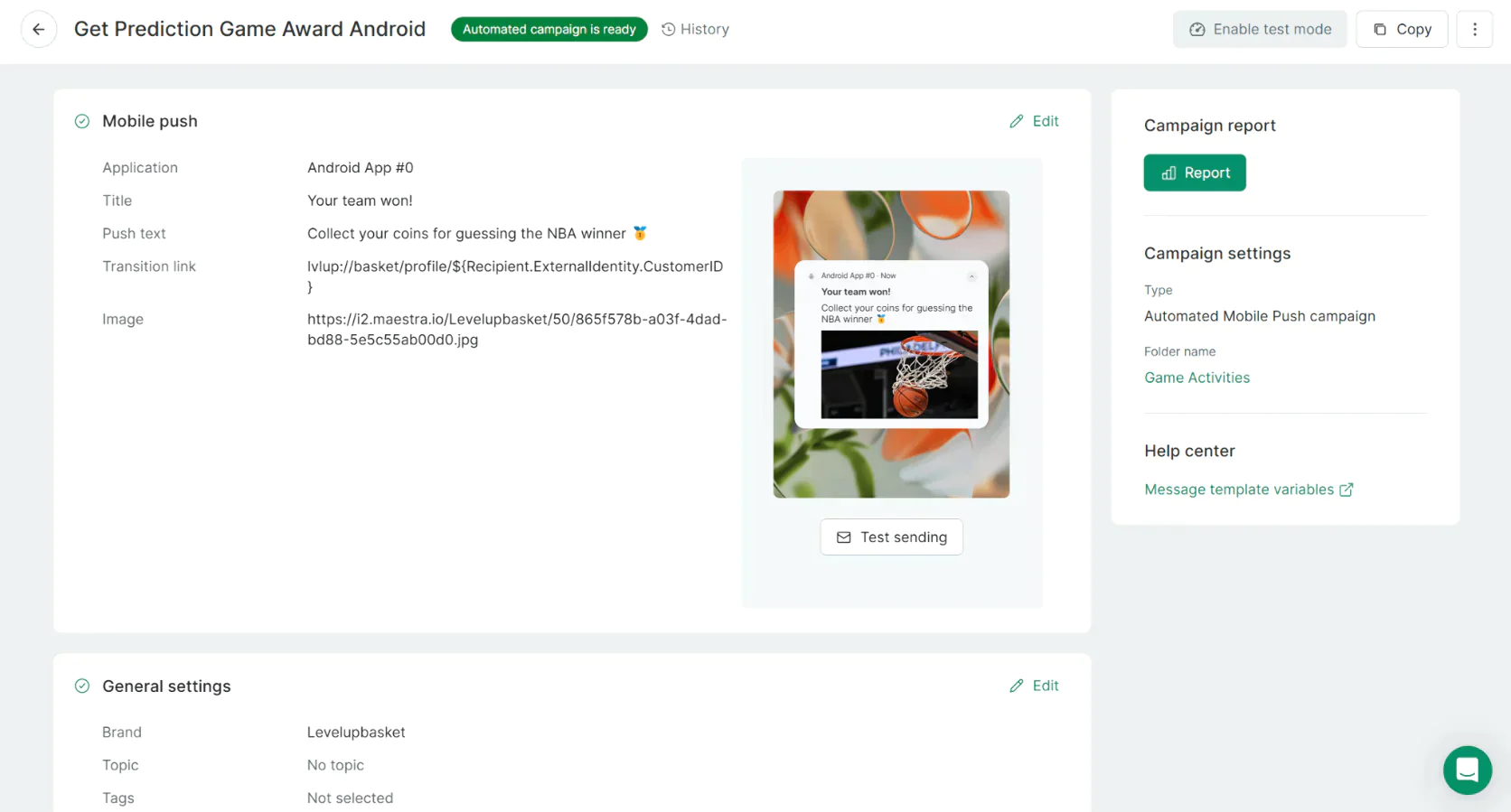
Maestra’s mobile push builder
For web push, Maestra provides a snippet to add to your website that prompts users to subscribe to notifications. Once subscribed, you can send them notifications even when they are off-site, through their browser.
Both mobile and web push in Maestra are fully integrated into the journey builder and segmentation. So you can do things like: If user hasn’t visited in 30 days, send a web push with a comeback offer; if they also have the mobile app and didn’t respond to web push, send a mobile push, etc. All of that logic can be built easily.
Maestra also handles the frequency—ensuring you’re not overloading users with too many notifications if they are also getting emails/SMS.
Another nice aspect is timing controls: you can schedule pushes for certain local times (e.g., send between 6-9pm in user’s timezone) or have them go out immediately based on triggers (like cart abandonment, price drop, etc., where immediacy matters).
With tracking, Maestra collects data on push delivery and if the user interacted (clicked)—for mobile, it can even tie back in-app events after a push to measure if the push led to a conversion. Essentially, Maestra offers push notifications with a level of sophistication on par with dedicated push platforms, and by being integrated, it makes the orchestration simpler.
This is something that neither Marketo nor SFMC include without extra steps or modules (Marketo lacking web push, SFMC needing configuration). So, for a marketer who wants to cover all bases (email, SMS, push, etc.) in one place, Maestra’s push is a strong advantage.
Winner: Maestra—Web and mobile push are natively supported and orchestrated in real-time across all campaigns.
Marketo vs Salesforce Marketing Cloud vs Maestra: Ad Optimization
Marketo
Salesforce Marketing Cloud
Maestra
⭐⭐⭐
⭐⭐⭐⭐⭐
⭐⭐⭐⭐⭐
Marketo—Marketo offers a feature called Ad Bridge which connects Marketo segments (Smart Lists) to Facebook and LinkedIn custom audience campaigns. This means you can push a list of leads or customers from Marketo to those ad platforms to create a custom audience (for targeting or exclusion).
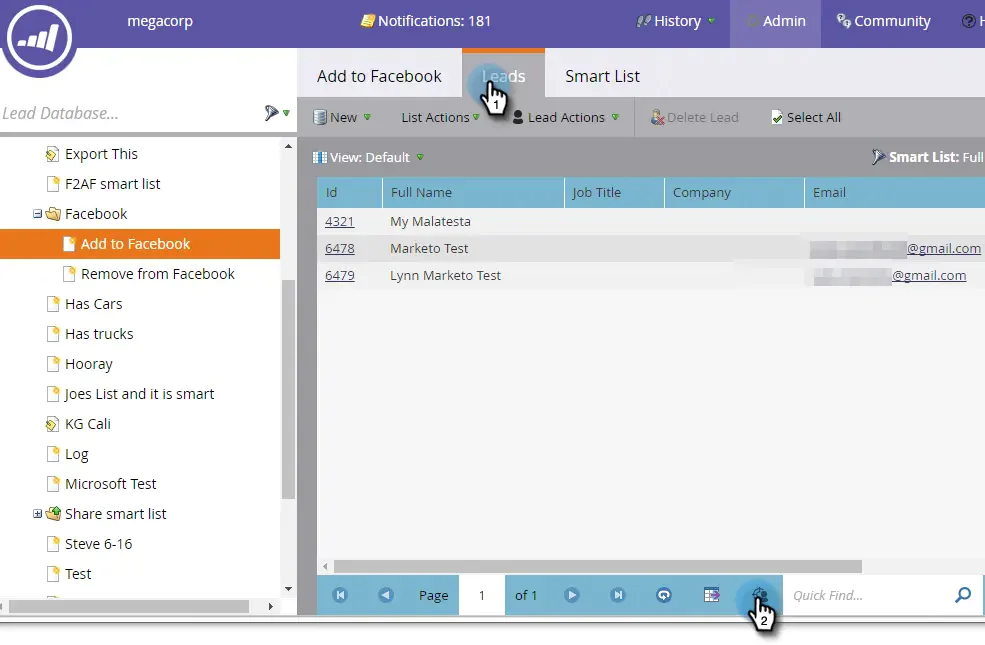
Ads audience syncing in Marketo
Marketo can also receive data back, like lead gen form fills from LinkedIn via integration, and it can attribute if a lead was acquired from an ad (if set up with UTM tracking and Marketo’s first-touch attribution). However, beyond audience syncing, Marketo doesn’t “optimize” ads in terms of creative or bidding. Marketo’s role is mainly in audience management and lead tracking.
In sum, Marketo helps ensure your ad platforms are using the latest data from your database (so your ads target/exclude the right people), and it can track resulting leads for ROI analysis. It’s a valuable capability for aligning marketing automation with paid advertising, but it’s not fully automated in optimization—you still have to analyze and adjust in the ad platforms.
Salesforce Marketing Cloud—SFMC has an Advertising Studio module dedicated to this. With Advertising Studio, you can connect to Facebook, Google, Twitter, Pinterest, and others to manage audiences. It allows you to create audiences from any data in SFMC and sync them regularly to the ad platforms. You can do suppression lists (e.g., don’t show ads to recent buyers), lookalike seed audiences (e.g., take my top 5% customers from SFMC and send to Facebook to create a Lookalike Audience).

Salesforce Marketing Cloud’s Advertising Studio
Advertising Studio also can track ad engagement and tie it to email or other behavior if the user becomes known.
One feature is it can automate lead capture from Facebook Lead Ads into SFMC (similar to Marketo’s LinkedIn Lead Gen integration).
Salesforce being a big ecosystem, if you also use Salesforce Sales Cloud CRM, there are synergies—for example, combining sales data with marketing data to create highly tuned ad audiences. If you have Datorama (Marketing Cloud Intelligence), you could pull in ad spend and performance data for deep analysis.
Another plus: SFMC can coordinate ads as part of journeys—e.g., add someone to a Facebook audience as a step in their journey path. So, if a person becomes inactive, a journey could automatically include them in a re-engagement ad campaign audience. That’s quite powerful cross-channel marketing.
Overall, SFMC’s ad integration is robust on the data side, making sure your ads are as personalized and well-targeted as your emails. It reduces wasted ad spend by leveraging CRM data (targeting precisely, suppressing irrelevant audiences). Many marketers find that using SFMC audiences improves their ROAS (return on ad spend) because they can do things like target high-value customers with higher bids, exclude low-value, etc., based on actual data.
Maestra—Maestra takes a data-driven approach to ads, heavily emphasizing efficient spending. It directly integrates with major ad platforms.
Through Maestra, you can set up rules like: automatically create a Facebook Custom Audience of all customers in Segment X, and keep it updated in real time. So, if someone enters or leaves that segment in the CDP, Maestra will add or remove them from the Facebook audience right away. This ensures your ads are always targeting the right people, not weeks out of date.
Maestra also helps with lookalike audiences by letting you push, say, your top 1000 customers as a seed to Facebook or Google Similar Audiences.
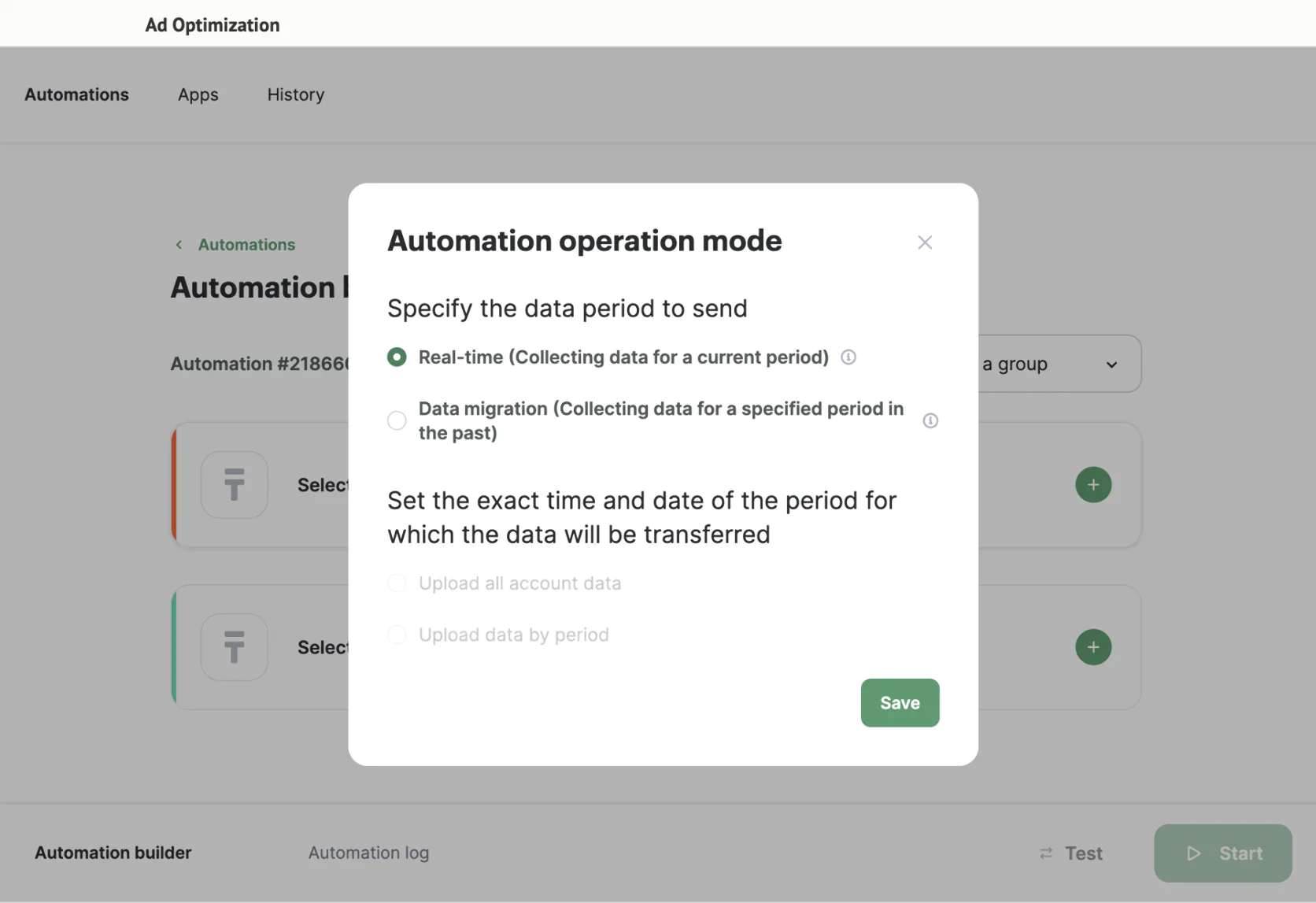
Because Maestra tracks cross-channel interactions, it can do things like stop showing ads to someone who just bought via any channel (Marketo and SFMC do that too, if set up). Maestra’s platform highlights the goal of spend optimization: their analytics can show cost per acquisition by channel and segment, helping marketers shift budget to where it yields best.
Since Maestra can also generate audiences like “cart abandoners who haven’t opened email” and send that to Google for a retargeting campaign, you’re able to reach people via ads when other channels fail. This ensures maximum conversion chances per user at minimum cost (each user gets the channel that makes them convert, without overspending on blasting all channels).
Essentially, Maestra tries to automate the audience targeting part of ad optimization (which is normally manual in ad platforms) using its real-time data. Long-term, this means better conversion rates and lower cost per conversion on your ad spend. It’s like having an intelligent audience manager constantly syncing with your ad accounts.
Winner: Maestra—Real-time audience syncing and ROI attribution make Maestra a performance marketer’s dream for paid media.
Marketo vs Salesforce Marketing Cloud vs Maestra: Reporting and Attribution
Marketo
Salesforce Marketing Cloud
Maestra
⭐⭐⭐
⭐⭐⭐⭐
⭐⭐⭐⭐⭐
Marketo—Marketo provides a range of standard reports: email performance, landing page performance, engagement stream performance, etc. For deeper analysis, Marketo had an add-on called Revenue Cycle Explorer (RCE) which allowed multi-touch attribution modeling and custom report building. If a company has Marketo’s bundled solution with Bizible (Adobe Marketo Measure), they can do advanced attribution like First Touch, Multi-Touch, even custom attribution models across the customer journey.
Out-of-the-box though, vanilla Marketo’s attribution is typically behavior scoring and program attribution. Marketo uses the concept of Programs to represent marketing initiatives, and you can set a success step (e.g., attended webinar, filled form) and then see Program ROI if you input cost data. It can credit pipeline and revenue to programs (using opportunity data from CRM) with first-touch or last-touch attribution logic. But it’s not extremely granular unless you have the add-ons. Many Marketo users export data to BI tools for comprehensive reporting.

Marketo’s reporting
On the plus side, Marketo does track individual lead histories very well, so you can manually analyze touchpoints for a single lead. For aggregate, Marketo has Influence Explorer type reports if Marketo Measure is present. Without it, you might just get simple attribution like “X opportunities had at least one touch from Program Y.”
Marketo’s analytics UI is not its highlight; it’s serviceable but can be clunky and somewhat limited in visualization. It does not have a real-time dashboard of revenue metrics unless configured. However, some companies integrate Marketo with CRMs for closed-loop reporting, which then gives decent insight into what marketing generated what revenue.
In summary, Marketo’s reporting is good for tactical metrics (email opens, lead conversions) and basic campaign attribution, but for holistic marketing attribution across many touches, it usually requires additional tools (Marketo Measure or other analytics).
Salesforce Marketing Cloud—SFMC has several layers of analytics. The basic one is Email Studio reports and Journey Builder stats—which show things like how many emails were sent, opened, clicked, how many SMS delivered, push engagements, etc. These are often presented in nice dashboards or can be exported. For deeper analysis, SFMC includes Analytics Builder with Reports and Discover. This is somewhat limited for custom analysis out of the box.
To get really in-depth, Salesforce offers Datorama (Marketing Cloud Intelligence) which can pull in data from SFMC and many other sources (ads, web analytics, CRM) to create cross-channel dashboards and do attribution modeling. If a company has Datorama, they can achieve excellent reporting: e.g., see the entire funnel from ad impression to email click to sale, all visualized, and attribute revenue to each channel. Datorama can do things like first touch, last touch, even algorithmic attribution.

Datorama Reports for Salesforce Marketing Cloud
But without Datorama, SFMC still has Einstein Analytics for Marketing which includes features like Einstein Engagement Scoring (predictive metrics for each contact) and Engagement Frequency (suggesting if you over or under message someone). Einstein can also do some attribution-like insights, such as which subject lines correlate with conversions (not exactly attribution, but optimization). The platform also provides Email Performance Over Time, Audience Engagement metrics, etc.
Another notable is Journey analytics: you can see how contacts move through a Journey and where they drop off or convert.
As for attribution, if SFMC is integrated with Salesforce Sales/Service Cloud, you can align campaigns with opportunities, but that usually relies on the CRM side for attribution reporting (Salesforce CRM has Campaign Influence reports for opportunities). SFMC itself would know if a contact who got emails eventually purchased (if purchase data is in SFMC), so you can do some attribution like “of those who clicked in the email, 5% purchased, generating $X.”
All in all, SFMC has strong analytics especially when fully utilized (often with extra components). Marketers using SFMC will generally have more data at their fingertips than Marketo, but they might still need to invest effort to stitch it into true ROI attribution.
Maestra—Maestra includes analytics dashboards focused on revenue and campaign effectiveness without needing separate BI tools. It tracks the entire customer journey across channels (since everything flows through its CDP).
Maestra’s reporting has standard open/click rates for emails, delivery rates for SMS/push, etc., but it goes beyond by tying those to outcomes. For example, Maestra can show: “This email generated $5,000 in sales, attributable to customers who clicked it and bought within 7 days”—basically, built-in attribution for each campaign. It does campaign comparisons, showing which promotions or flows yield higher revenue.
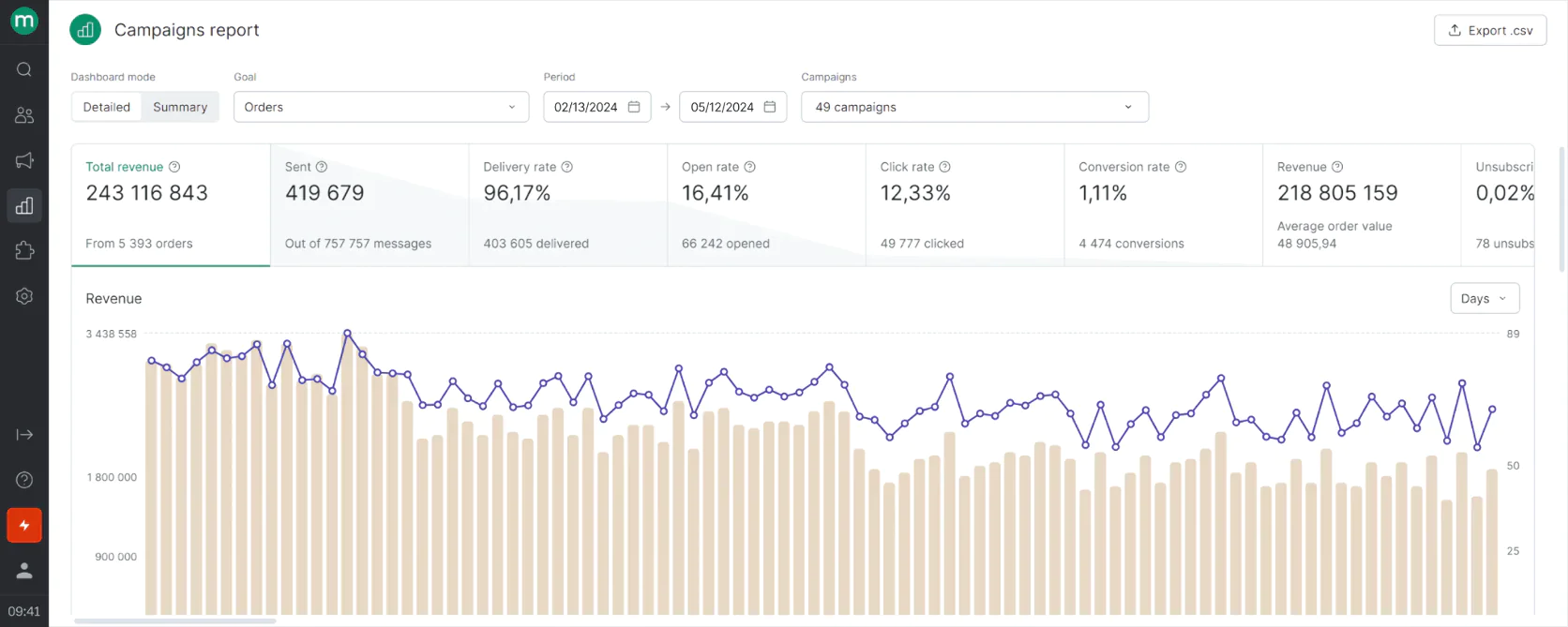
The platform helps track business goals, loyalty programs, and campaign ROI through multiple dashboards. You can set goals (like increase repeat purchase rate) and Maestra will report progress.
Maestra allows use of control groups for campaigns, which is a sophisticated feature—you can hold out a random subset of customers from a campaign to measure true lift (for instance, send a promotion to 90% of eligible customers, hold 10% as control, then compare purchase rates—Maestra can do this math for you). This helps you attribute incremental revenue to the campaign, not just correlation.
The platform also offers an Email Health Dashboard comparing your email metrics to industry benchmarks, which helps in understanding if your engagement is good or needs improvement.
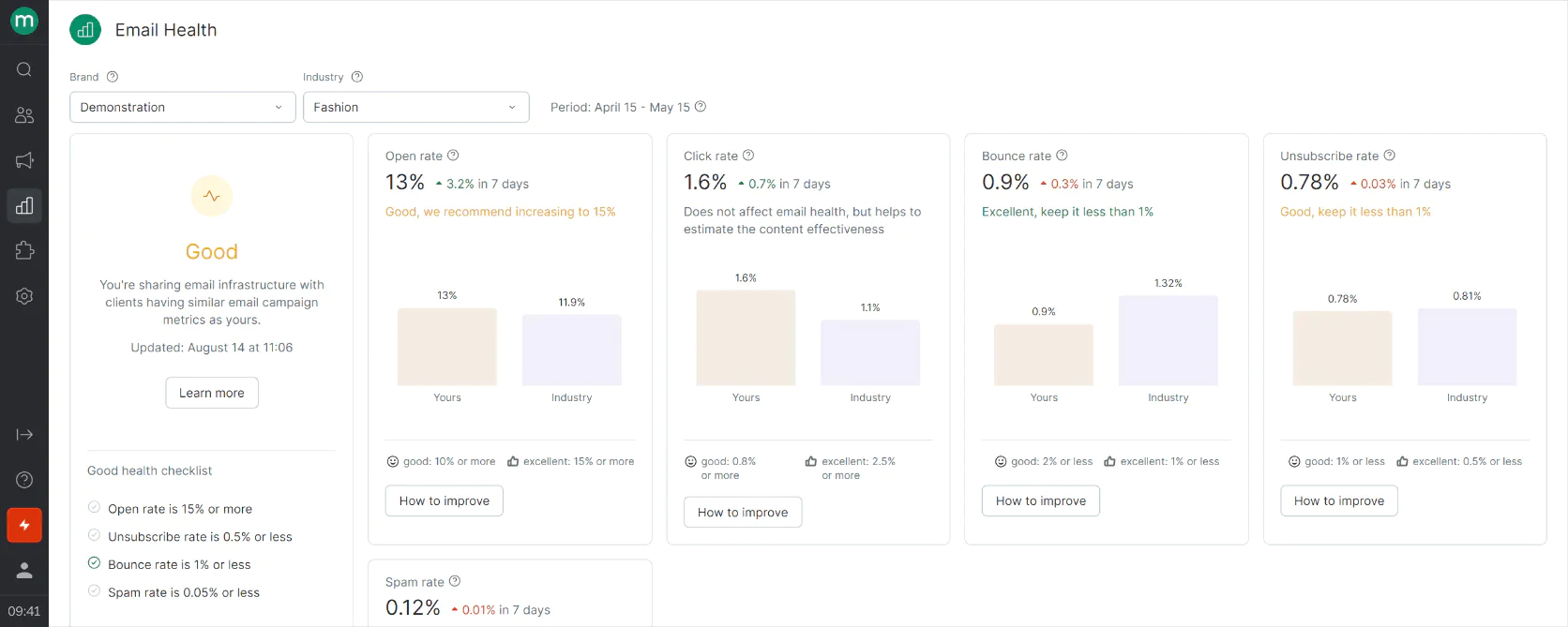
Maestra’s email health monitoring
And all data can be exported anytime if you want to do external analysis.
Essentially, Maestra is built to be your marketing command center where you can see at a glance what’s working across all channels and what the ROI is. You won’t need a separate attribution tool because it’s part of the value proposition—especially to justify using Maestra for omnichannel, they provide the evidence of impact right there.
For a marketing team that doesn’t have a dedicated data analyst, Maestra’s straightforward attribution and control group testing is extremely valuable, as it gives clear guidance on which strategies drive revenue and which don’t.
Winner: Maestra—due to its out-of-the-box advanced dashboards, it gives marketers actionable insight without extra complexity.
Marketo vs Salesforce Marketing Cloud vs Maestra: Customer Support
Marketo
Salesforce Marketing Cloud
Maestra
⭐⭐
⭐⭐
⭐⭐⭐⭐⭐
Marketo—Marketo offers tiered support. Basic subscription comes with access to their online support portal (where you can submit tickets), the knowledge base, and the community forum. Response times on basic support can be 1-2 business days. Marketo also has Premier Support (paid upgrade) which gives you faster responses, phone support, and a designated support engineer or account manager. They don’t automatically assign you a personal success manager unless you are a very large enterprise client or pay for it.
Marketo’s community, called Marketing Nation, is quite active and often you can find answers or get peer advice there. For many users, the community and self-service documentation fill in the gaps because Marketo’s standard support, while generally knowledgeable, can be slow for non-critical issues.
Marketo also offers (for an extra cost) Professional Services and training if you need hands-on help or consulting for complex implementations.
On the plus side, Marketo support reps are usually well-versed in typical marketing automation challenges and can help troubleshoot technical problems within Marketo. If an issue is urgent (e.g., system outage), Marketo is fairly responsive, but for strategic guidance, you might not get that in standard support interactions. So, many Marketo customers supplement with a certified Marketo consultant or agency when they need deeper guidance.
In summary, Marketo’s support is solid but basic at the standard level—sufficient for break/fix help, not as much for proactive strategy or complex campaigns without paying more.
Salesforce Marketing Cloud—Salesforce is known for a comprehensive but pricey support model.
With SFMC, you get Standard Success Plan by default, which includes online case submission and access to support during business hours, as well as the extensive Salesforce help documentation and Trailblazer community. However, a lot of SFMC users opt for the Premier Success Plan (at additional cost) which provides 24/7 support, accelerated response times, and access to specialists. There’s also Premier+ which can include admin services where Salesforce helps do some configuration for you.
Enterprise SFMC customers often have an assigned Account Executive (sales side) and maybe a Success Manager who checks in on adoption, but the depth of help depends on your contract. One notable benefit is the huge ecosystem of Salesforce partners—many companies use a Salesforce consulting partner for initial implementation and ongoing support.
Salesforce’s documentation and guided learning (Trailhead) mean a team can self-educate a lot, but when you hit an issue, sometimes support might take time, as they handle many complex cases. For critical incidents, Salesforce has a Severity-based escalation (Sev 1 issues get very fast attention, lower sevs slower).
They also offer Accelerators—short consulting sessions on specific topics for Premier customers. On community forums (like Salesforce StackExchange or Slack communities), there’s a wealth of expertise too.
Overall, SFMC support is robust but tiered: if you invest in a higher support plan, you get excellent, more personalized support (including things like monthly check-ins, optimization recommendations, etc.); at the basic level, you might rely more on self-service resources and slower case resolution.
Maestra—Maestra is a smaller, dedicated provider and as such emphasizes a very high-touch support experience for all clients. They include a dedicated Customer Success Manager for every customer. This is a big differentiator—no matter your size, you have a point person who ensures you’re successful.
Maestra also offers hands-on white-glove migration services: for example, moving your email templates, rebuilding your automations in Maestra, and making sure everything is working. Your CSM helps with onboarding (setting up your integrations, migrating data from your previous tools, training your team on how to use Maestra). They organize strategy calls—effectively acting as an extension of your marketing team, advising on how to set up campaigns, how to improve results, etc.
In terms of technical support, Maestra provides in-app live chat with very fast response times (often under a few minutes during business hours). Since Maestra is keen on client success, they tend to go the extra mile: for instance, if you’re trying to implement a complex workflow, they might jump on a call and build it with you rather than just sending you docs.
They also proactively monitor your usage—if you haven’t used a powerful feature, they might reach out to help you leverage it. Essentially, Maestra’s support feels more like a consultative service. Because they bundle this support into the cost (no extra fee for dedicated help), customers who might not have a large in-house team can still execute advanced marketing because the Maestra team guides them. This is especially useful for mid-market businesses that need expertise but can’t afford pricey consultants regularly.
The risk with smaller companies is always bandwidth, but Maestra has structured their model to scale this personalized support by assigning each CSM a manageable number of clients. Clients aren’t just buying software, they’re getting a partner. This can significantly shorten learning curves and boost campaign performance quickly, as help is always at hand.
Winner: Maestra—Every customer gets a dedicated success manager—no upsells, no waiting, just real support.
Marketo vs Salesforce Marketing Cloud vs Maestra: Integration Capabilities
Marketo
Salesforce Marketing Cloud
Maestra
⭐⭐⭐⭐
⭐⭐⭐⭐⭐
⭐⭐⭐⭐⭐
Marketo—Marketo has a wide range of integrations via LaunchPoint, which is their marketplace of tech partners.
Key native integrations include CRM systems like Salesforce (a very popular integration Marketo is known for) and Microsoft Dynamics—Marketo can bi-directionally sync leads/contacts and activities with those CRMs. It also integrates with webinar platforms (On24, GoToWebinar, Webex) for automatically capturing webinar attendees. You’ll find LaunchPoint services for survey tools, event platforms, and more. Many integrations are basically pre-built connectors that use Marketo’s APIs in the background.
Marketo’s API is well-documented and allows for custom integration with pretty much any system that can call REST APIs—you can add or update leads, fetch activities, etc. So if there isn’t an out-of-box integration, developers can usually connect Marketo to other databases or services.
Marketo also supports webhooks—which is a way to call out to an external service from within a Smart Campaign. This is often used to do things like verify phone numbers via a third party, or send a text via Twilio (before native SMS existed), or pull in data from an external scoring system in real-time. Using webhooks and APIs, Marketo customers have integrated all sorts of niche tools.
The downside is some more modern apps (especially in e-commerce world like Shopify) don’t have an official Marketo plugin, since Marketo is more focused on enterprise. But if you have a developer resource, Marketo can fit into most stacks.
Also, Marketo’s data import/export capabilities (like list import from CSV, data export to CSV) make manual integration possible if automated sync isn’t set up. Marketo’s integration strength historically has been CRM sync—that’s crucial for sales-marketing alignment in B2B. It’s near real-time and robust. For everything else, either LaunchPoint or API covers it. Marketo has about 500+ LaunchPoint partners, which is good, though not as many as Salesforce’s AppExchange ecosystem.
Salesforce Marketing Cloud—SFMC being part of Salesforce, its biggest integration advantage is with Salesforce CRM (Sales/Service Cloud). Using Marketing Cloud Connect, SFMC can directly pull in contacts, leads, and campaign data from Salesforce CRM and push back engagement metrics. This is a huge plus for companies already on Salesforce—it makes SFMC and CRM function more like one system (with some limitations, but still). SFMC also has a broad set of AppExchange apps and built-in connectors.
For example, it has connectors for SAP Commerce, Magento (Adobe Commerce), various CMS systems, etc., often facilitated through MuleSoft (another Salesforce product) or custom packages. SFMC can connect to databases via Marketing Cloud Connectors or directly via API. It has a robust SOAP and REST API for all sorts of operations—injecting contacts into journeys, pulling data out, sending triggered messages from external systems, etc. Many large companies use SFMC’s API to have their e-commerce or backend trigger transactional emails (like order confirmations) through SFMC for consistency and tracking.
The number of integration options is very high, thanks to Salesforce’s large partner network. For instance, there’s likely pre-built integrations with loyalty platforms, customer service platforms (though if you use Service Cloud, that’s already native), and data warehouses.
Another key integration aspect is data import/export: SFMC can import data from files via Automation Studio on a schedule and export data similarly.
Also, Journey Builder’s Events can be API-triggered or triggered by a Salesforce record change if you use Sales Cloud. So integration can be event-driven, not just batch. Essentially, SFMC can fit into a complex enterprise IT environment with many data sources, either through its native connectors or the extensive use of APIs and possibly MuleSoft for more complex orchestrations.
It’s rare to find something SFMC absolutely can’t integrate with—it’s more about how much work it takes. But given the 170+ connectors mentioned, it’s safe to say SFMC is extremely integration-friendly, especially if you have the technical resources to utilize it.
Maestra—Maestra, understanding its target market of e-commerce, provides ready-made integrations for the most common systems those businesses use. Out-of-the-box, Maestra has plugins for e-commerce platforms like Shopify, Magento, BigCommerce, WooCommerce, etc., which allow it to pull in orders, products, and customer data easily. It also integrates with payment systems, and ad platforms (Facebook, Google).
The most important part is Maestra’s willingness to create custom integrations as needed. If you have a unique system, Maestra will help build the connector, which is an exceptional level of service (reducing the worry that “if it’s not already integrated, we’re stuck”).
Technically, Maestra offers a full API and webhook system. Webhooks allow external systems to get notified by Maestra events (e.g., customer created, segment changed) to sync with other databases. And the API would allow pushing or pulling data (for example, updating a customer’s profile from an external system). So even if a direct integration doesn’t exist, integration is possible and supported by their team.
Integration monitoring is also included, meaning Maestra’s team ensures data flows are running smoothly (if an integration breaks, they’ll alert/fix). This is a level of support you wouldn’t get from Marketo or SFMC unless you pay a consultant to babysit your integrations.
So, Maestra’s integration capability is comprehensive and customer-centric: whatever you need connected, they’ll help make it happen. For most standard tools, it’s plug-and-play. For custom needs, they’ve got APIs and hands-on help. That ensures Maestra can act as the central hub of your marketing stack, not a silo.
Winner: Maestra—A wide range of plug-and-play integrations plus custom-built solutions make Maestra the most flexible platform in the stack.
Marketo vs Salesforce Marketing Cloud vs Maestra: Educational Resources
Marketo
Salesforce Marketing Cloud
Maestra
⭐⭐⭐⭐
⭐⭐⭐⭐⭐
⭐⭐⭐⭐
Marketo—Marketo, having been around for a long time, has a well-developed ecosystem of learning resources. Adobe provides extensive documentation on Experience League (Marketo’s docs cover everything from basic email setup to advanced API usage). There’s also the Marketo University training courses (some free, some paid) and certification programs (Marketo Certified Expert is a known credential).
The Marketo Community (Marketing Nation) is a treasure trove of Q&A—if you search a question, chances are someone has asked it in the forums and an expert or Marketo support rep answered. Marketo also has an Ideas forum where users suggest improvements and see if they get implemented.
For more interactive learning, Marketo hosts webinars and user group meetings (MUGs, often city-based or virtual user groups). There are even third-party blogs (by Marketo consultants and users) that provide tips, tutorials, and sample programs. Because Marketo is complex, an entire cottage industry of consultants and agencies offers Marketo onboarding and training. This means if you want a structured training program for your team, you can find one.
Marketo’s own site also has use-case guides and best practice whitepapers. In short, as a user, you have access to a wealth of content: manuals, community answers, YouTube videos, etc. It might not be as gamified as Salesforce’s Trailhead, but if you’re proactive, you can become proficient by using these resources. The only challenge can be that some content might be outdated if Marketo’s interface changed, but core concepts remain similar over years.
Marketo’s parent, Adobe, also integrates Marketo content into Adobe’s Experience League learning portal, making it a bit more unified with other Adobe marketing products. Overall, for a marketer or admin, Marketo’s learning curve is non-trivial, but the company and community provide enough help that thousands have mastered it and share knowledge forward. Marketo also holds an annual conference (Adobe Summit, formerly Marketo Summit) where users can learn a lot (though that’s a bigger Adobe event now).
So, educational resources for Marketo are abundant, requiring the user to seek them out and engage.
Salesforce Marketing Cloud—Salesforce heavily promotes Trailhead, which is an interactive learning platform. For Marketing Cloud, there are Trailhead modules like “Marketing Cloud Basics”, “Email Studio for Marketing Cloud”, etc., which let users learn by reading and doing quizzes and sometimes even hands-on in a Trailhead simulator org. Trailhead is free and quite comprehensive.
Additionally, Salesforce has official training classes (virtual or in-person, but often paid) for Marketing Cloud Administrator, Marketing Cloud Email Specialist, etc., which prepare you for Salesforce Marketing Cloud certifications. Yes, SFMC has multiple certifications which many professionals pursue, meaning there’s a clear curriculum for what to learn.
Salesforce’s help documentation is detailed (sometimes too dense, but thorough). The Trailblazer community has a Marketing Cloud group where you can ask questions. There are also third-party communities like the SFMC Slack channel, StackExchange tags, etc., where SFMC experts (including Salesforce employees) answer questions. Because SFMC covers a lot of components, you might need to dive into specific resources for each (Email Studio vs Journey Builder vs Mobile).
But Salesforce’s ecosystem makes knowledge accessible. On top of that, Salesforce and partners produce a lot of content: blogs (e.g., Salesforce Ben, a popular blog, has many how-tos on SFMC), YouTube channels (Salesforce Marketing Cloud has webinars and demos). They also have Accelerators (short 1-on-1 coaching sessions on specific topics, for Premier customers). And if you have a Success Manager, they might point you to relevant guides or help design a learning plan.
The user community is large, but arguably not as large as Sales Cloud’s community since SFMC has fewer total users. Still, it’s very active. The documentation includes step-by-step guides for configuration and code examples for things like AMPscript. Many agencies provide SFMC training as well.
So, whether you prefer self-paced modules (Trailhead), formal classes, or community advice, SFMC has it. Actually, one of Salesforce’s selling points is that a motivated user can self-educate through Trailhead and become certified, which is well-recognized. The only slight drawback: because SFMC can be technical (SQL, scripting), pure marketers sometimes need more guided help—which is available if sought.
In summary, Salesforce offers probably the richest set of formal training resources (via Trailhead and certifications), plus a strong community, making it one of the best ecosystems to learn in.
Maestra—As a newer company, Maestra won’t have the massive user community that Marketo or SFMC have, but they invest in making their platform easy to learn with direct guidance. In terms of documentation, Maestra likely provides a comprehensive Knowledge Base/Help Center covering how to use each feature, with screenshots and examples.
They also produce blog articles and guides on marketing best practices (the reference article itself is part of their content marketing/education). These guides often serve dual purpose: teach marketing concepts and show how to execute them in Maestra. They might have webinars or on-demand videos demonstrating how to build certain campaigns.
Because each customer gets a success manager, a lot of learning happens through personal training sessions—essentially a tailored onboarding where your team is taught how to use Maestra on your own data and campaigns. That can sometimes beat generic tutorials, since it’s hands-on with your use-case.
Maestra probably also hosts community webinars (maybe monthly) to showcase new features or advanced tactics. Being smaller, they might not have a formal certification program or giant community forum yet. But they likely have a feedback forum or direct line for users to ask questions—often smaller SaaS companies use tools like an Intercom chat not just for support but also to answer “How do I do X?” type questions on the fly, which can be quicker than searching docs.
Additionally, Maestra’s website suggests they provide resources like calculators, tools, etc., as part of being a “knowledge base for everyone who works in marketing,” indicating they want to be seen as an educational hub. Over time, as their customer base grows, they might foster a community user group or discussion board.
For now, the emphasis is likely on high-quality documentation and one-on-one coaching rather than massive community content. The advantage is you get answers straight from the source (the Maestra team) quickly, rather than sifting through possibly outdated forum posts. For many mid-market clients, that’s ideal because they might not have time to self-teach everything.
Maestra’s educational approach is more concierge-style: they ensure you know how to get value from the platform via guided help and readily available instructions. They also likely share case studies and playbooks of successful campaigns (education through examples).
So while the scale of resources might be smaller than Marketo/SFMC, the effectiveness of learning could be higher due to personalization. Users can quickly become proficient with Maestra because the combination of an intuitive UI plus responsive support/team means less need for lengthy training.
Winner: Salesforce Marketing Cloud—Trailhead and an active community give SFMC the edge in scalable, structured learning paths.
Marketo vs Salesforce Marketing Cloud vs Maestra: Pricing
Marketo
Salesforce Marketing Cloud
Maestra
💲💲
💲💲💲
💲💲
Marketo—Marketo’s pricing is typically based on the number of contacts in your database (sometimes tiered by ranges like up to 10k, 10k-100k, etc.) and the edition/features you need. They have tiered editions (e.g., Select, Prime, Ultimate) that bundle certain features. Some advanced features (like Predictive Content, Advanced Analytics/Bizible, ABM module) might be add-ons.
Marketo usually operates on an annual contract model (SaaS subscription). The exact price is not published—you have to get a quote. But smaller instances can start around $1,000-$2,000 per month, and big enterprise databases can run tens of thousands per month. So, it scales with the size of your marketing list largely.
Marketo tends to be cheaper than SFMC for similar large volumes but more expensive than some SMB-focused tools. There’s also costs to consider such as if you need dedicated IPs for email (Marketo might charge for that or require higher tier), or if you want premium support.
Marketo does offer short term lower-priced bundles for very small businesses (they had “Jumpstart” packages historically), but it’s mostly mid-market and up. One advantage is Marketo includes unlimited emails in its pricing (not charged per email send), unlike some email marketing tools.
ROI-wise, Marketo can be cost-effective if you fully utilize its automation to drive revenue, but if you only use it for basic email blasts, it would be overpriced. They often pitch that using Marketo can replace needing multiple other tools, but you might still end up licensing a few tools (for example, Marketo + a separate loyalty platform + a BI tool).
Salesforce Marketing Cloud—SFMC’s pricing is known to be complex. They have studios and builders and often sell in bundles. They have editions like Basic, Pro, Corporate, Enterprise with costs starting around $1,250/month for basic Email package and going way up for enterprise with all studios.
Also, SFMC tends to charge by contact volume (like Marketo) and/or message volume depending on the component. For instance, Email Studio might have tiers by number of contacts or emails per month. They also charge for SMS sends separately (e.g., per block of SMS or per message). If you want the whole suite (Email, Mobile, Advertising, Personalization, etc.), you likely are looking at a significant investment (some large companies spend hundreds of thousands per year).
Salesforce also often requires a multi-year contract, and any additional modules bump the cost. There are sometimes “all you can eat” style bundles for mid-market that include a bit of everything at a set price for a certain contact count—that could be good value if you use all features. But if not, you might feel like you’re overpaying.
Since SFMC is enterprise-focused, the pricing is premium—you pay for the robust capabilities and scalability, and for the integration with Salesforce’s ecosystem. For someone already paying for Salesforce CRM, adding SFMC might come with some cross-product discounts or unified contracts. Another cost factor: SFMC often needs more services (either consulting partner or internal devs), which indirectly increases TCO (Total Cost of Ownership).
However, large B2C companies that send millions of emails to millions of contacts find SFMC pricing reasonable for the scale and sophisticated tools. So, the value is there if you leverage the breadth of SFMC; if you only use it for one channel, it’s pricy. In short, SFMC is the most expensive of the three, generally, especially for full omnichannel use, but it delivers enterprise-grade service for that cost.
Maestra—Maestra’s pricing model is based on number of customer profiles (contacts) you manage in the CDP, as mentioned. Starting at ~$2,990/month for up to 80k profiles is actually quite straightforward.
Every tier includes essential features and unlimited emails. So unlike SFMC, you don’t pay extra for emailing a lot or for enabling a particular module—you get email, SMS (except paying the SMS message fee), push, loyalty, etc., all included. That flat approach can be very cost-effective: you’re consolidating what might require 3-5 different tools (and their combined costs) into one platform cost.
Also, as you grow, they claim cost per profile becomes lower—volume discounts or economies of scale. And importantly, white-glove support is included in all plans, which in Marketo/SFMC would cost extra or might not even be available at lower tiers.
The SMS fee they list is cheaper than many providers. This suggests Maestra is not looking to profit off SMS, just pass-through cost or subsidize it to encourage using their SMS.
There are no upfront fees and you can cancel anytime (Salesforce usually requires annual commitments, and Marketo at least annual; Maestra allows monthly or more flexibility). This could indicate a lower risk to try Maestra—you’re not locked for years.
The pricing transparency and simplicity is a plus. At ~$3k/month for a robust multi-channel platform, Maestra is positioned as a high-value alternative to building a stack of many tools.
In conclusion, Maestra’s pricing is straightforward and potentially cost-saving, especially when considering the elimination of other software costs and the included support (which itself could be worth thousands per month).
It’s a more transparent model compared to the often opaque quotes of Marketo and SFMC. Customers not only pay less in many cases, but also see more tangible value because all features are utilized (no paying for shelfware modules you don’t use).
Marketo vs Salesforce Marketing Cloud vs Maestra: Final Verdict
After comparing Marketo, Salesforce Marketing Cloud, and Maestra across all these categories, it’s clear that each platform serves a different purpose and audience:
Marketo
Marketo is a powerhouse for lead-centric marketing (especially B2B), with excellent email and lead management capabilities. It’s reliable and integrates well with CRMs, but shows its limits in omnichannel reach and requires additional tools for loyalty, advanced personalization, or UGC.
Marketo might be the right choice if you primarily need a proven email automation and lead nurturing engine and have the resources to manage its complexity (and perhaps add other point solutions around it). Its pricing is mid-to-high, and you should factor in costs for any missing pieces (and possibly extra support or consulting).
Salesforce Marketing Cloud
Salesforce Marketing Cloud offers the most comprehensive suite—if you need enterprise-scale emailing, texting, push, ads, and even on-site personalization, SFMC can do it all under one roof. It shines for large consumer databases and when integrated with Salesforce’s other offerings, enabling true 360° customer marketing.
The trade-off is complexity (it’s a big machine that requires skill to run) and cost—you’ll invest significantly, both in software and in the team or partners to manage it.
SFMC is ideal for organizations that have reached a level of maturity and scale where they need those enterprise features and are prepared to support the platform. For those organizations, the ROI can be high because SFMC will drive sophisticated campaigns that increase revenue. But for smaller teams, it can be overkill.
Maestra
Maestra emerges as a unified platform that packs omnichannel marketing, loyalty, and personalization into one package geared towards mid-market e-commerce and retail brands (though any customer-focused business could leverage it).
Throughout each category, Maestra either matched or exceeded the capabilities of the others, often with the advantage of simplicity and real-time unity. Its built-in CDP, loyalty program, and cross-channel automation mean you don’t have to stitch together multiple tools—which is a huge benefit in efficiency.
Maestra’s subtle edge is that it was built with modern e-commerce marketing in mind (think hyper-personalization, instant segmentation, AI-driven recommendations) rather than as an email tool that evolved outward. Add to that the high-touch support and straightforward pricing, and Maestra presents a compelling value.
It allows a marketing team to punch above its weight, executing campaigns with a level of sophistication typically seen in enterprises, but without needing an army of specialists.
Final Verdict
For companies that want omnichannel marketing without the headaches, Maestra is a standout choice. It delivers all the capabilities of a complex stack (like Salesforce Marketing Cloud + a loyalty system + a personalization engine) in a cohesive platform that’s easier to use and backed by strong support.
Marketo and SFMC are established leaders and might be better fits in certain scenarios—Marketo for more B2B-driven organizations with heavy CRM alignment, and SFMC for very large enterprises deeply invested in the Salesforce ecosystem.
However, if you are a growing brand looking to engage customers across email, SMS, web, and more—and especially if you value things like loyalty rewards and personalized recommendations—Maestra provides the best balance of power and simplicity. It’s essentially enterprise-grade marketing tech delivered in a user-friendly way, at a mid-market price point.
In conclusion, Maestra offers a unified solution that can replace and outperform a patchwork of legacy systems. It enables you to create the kind of seamless, personalized customer experiences that drive higher engagement and loyalty, without the usual complexity.
If you’re striving to build stronger relationships with your customers through cohesive omnichannel marketing, Maestra is worth serious consideration as your marketing platform.
Ready to take your customer engagement to the next level? Book a demo with Maestra right now!
